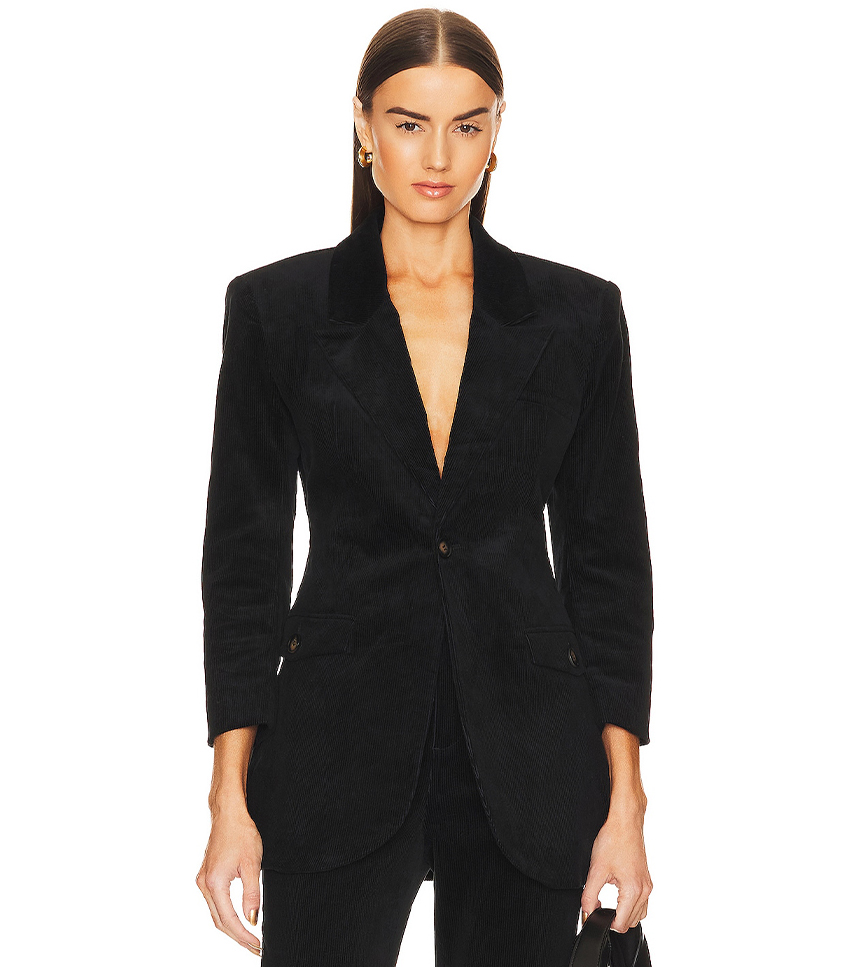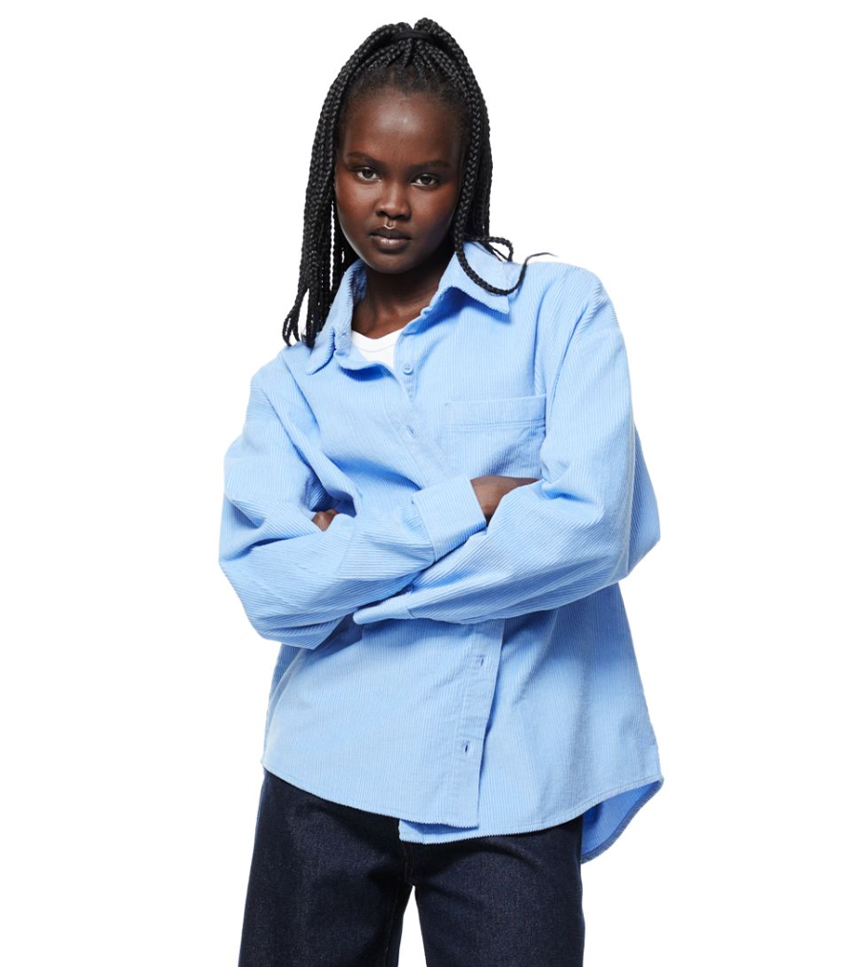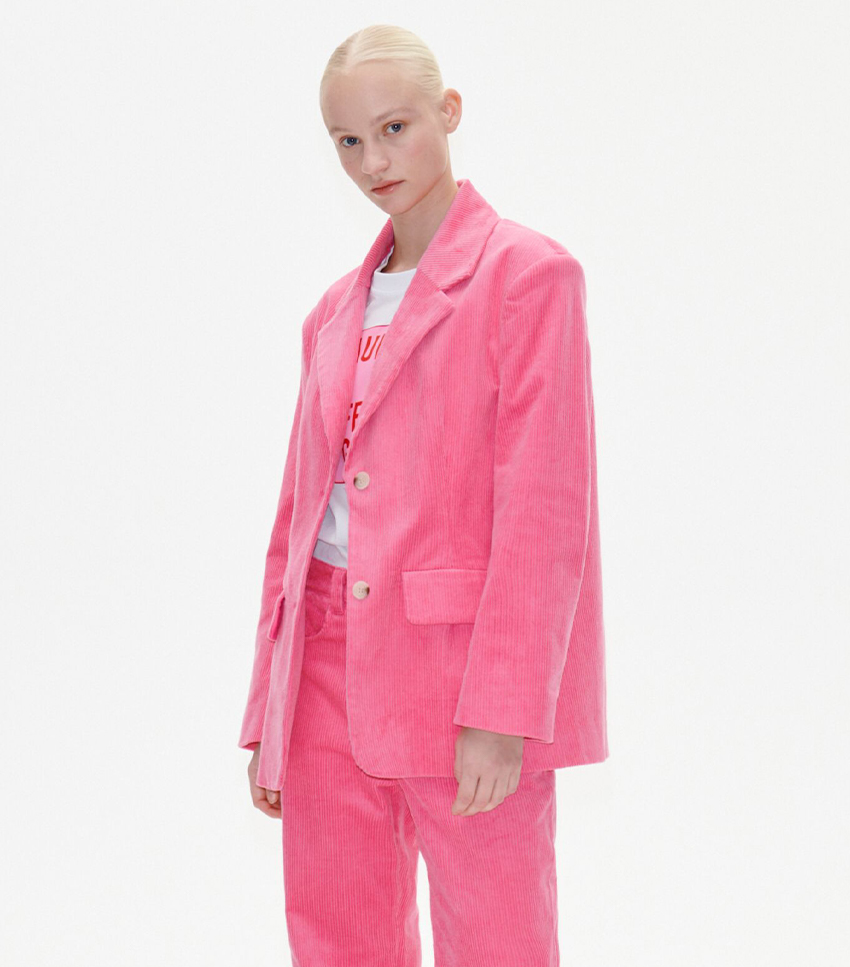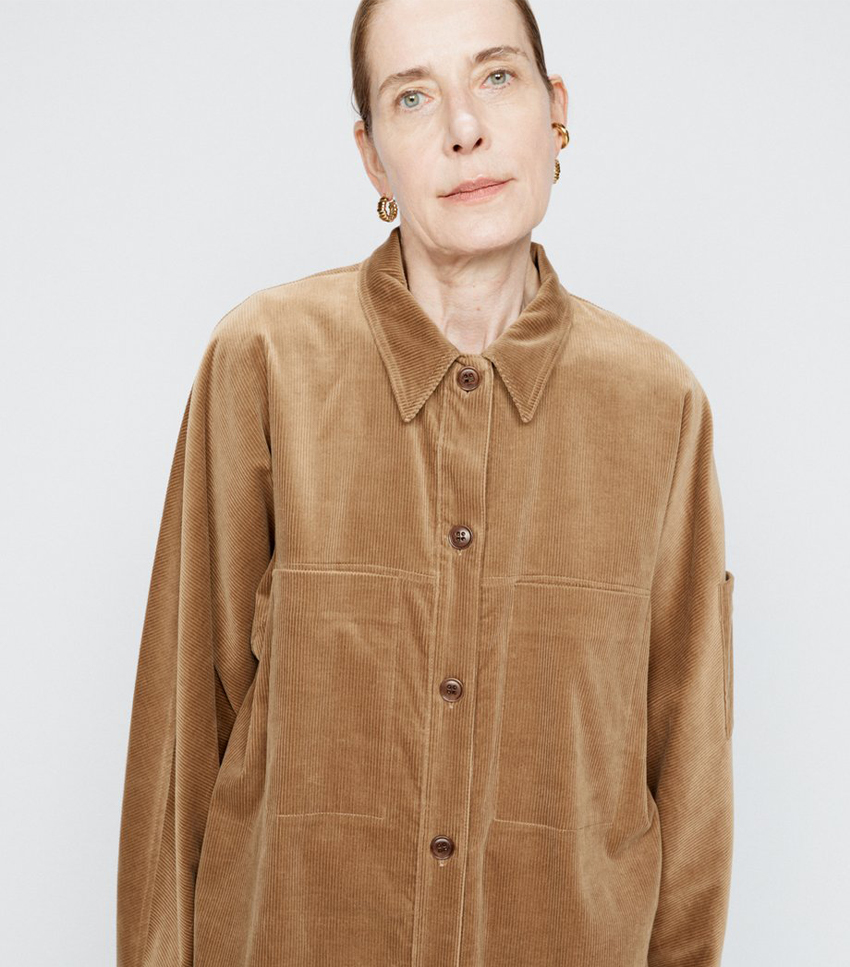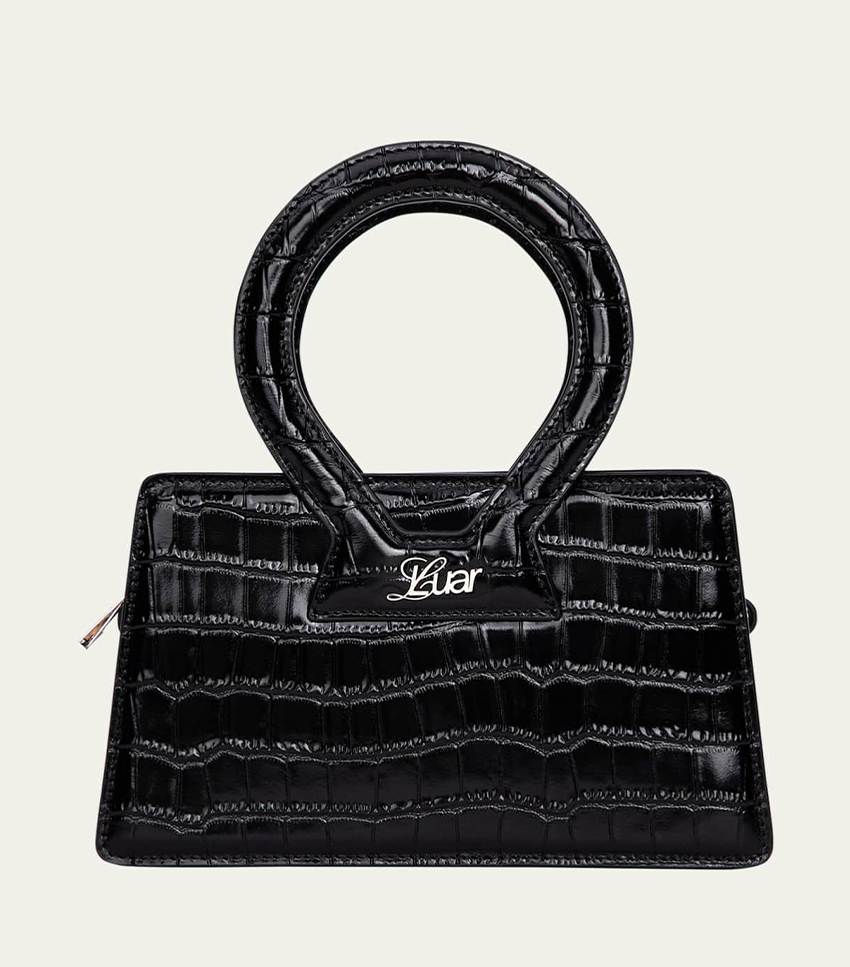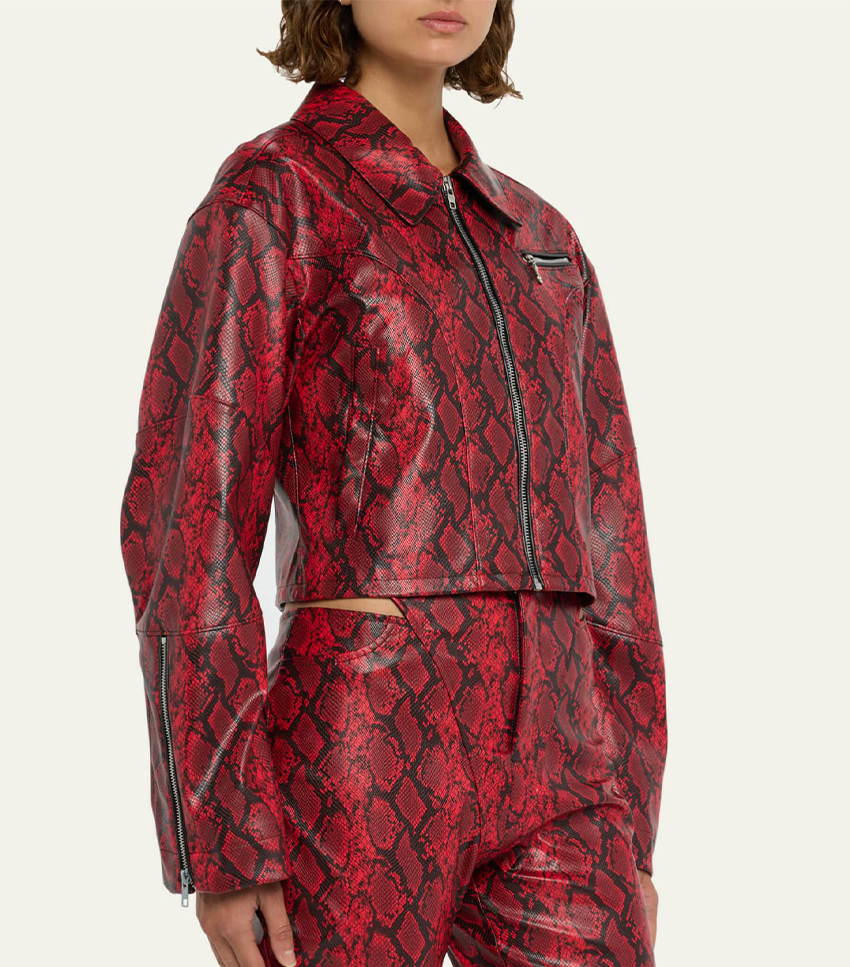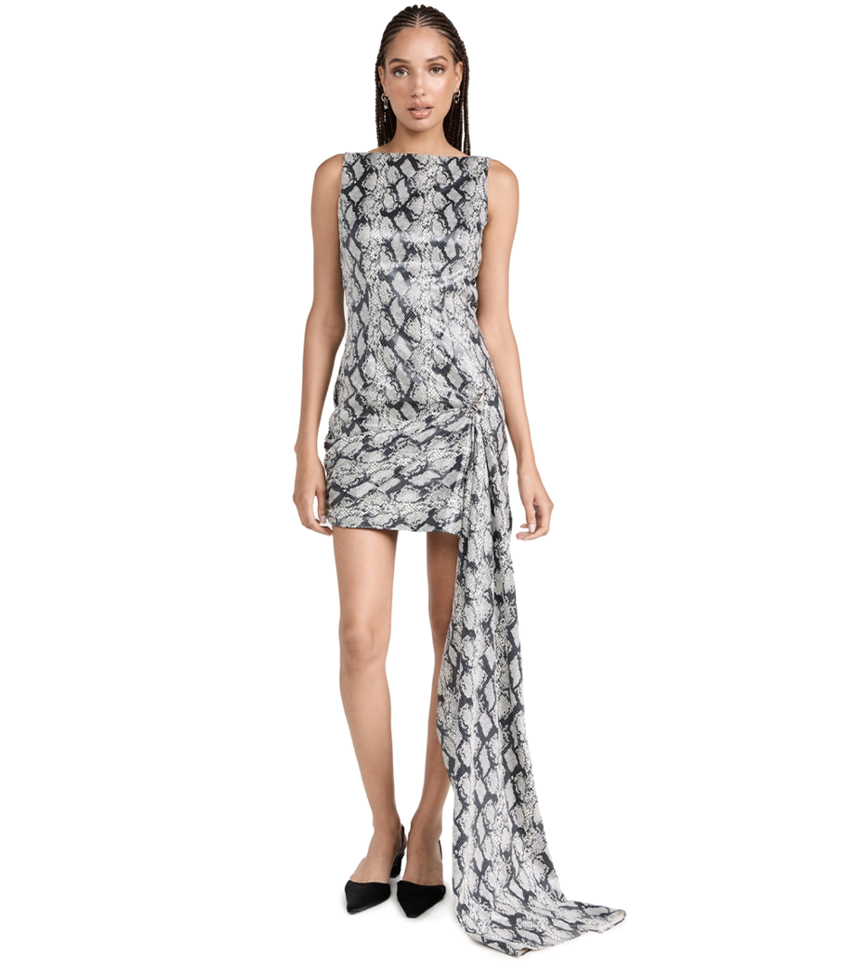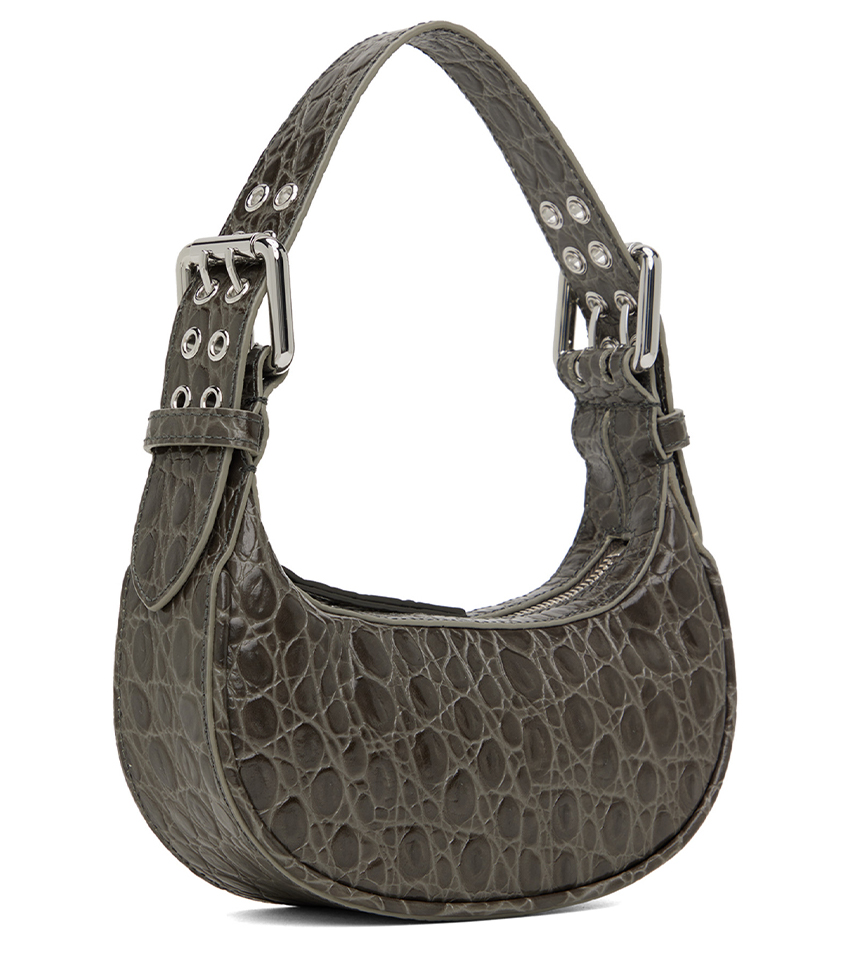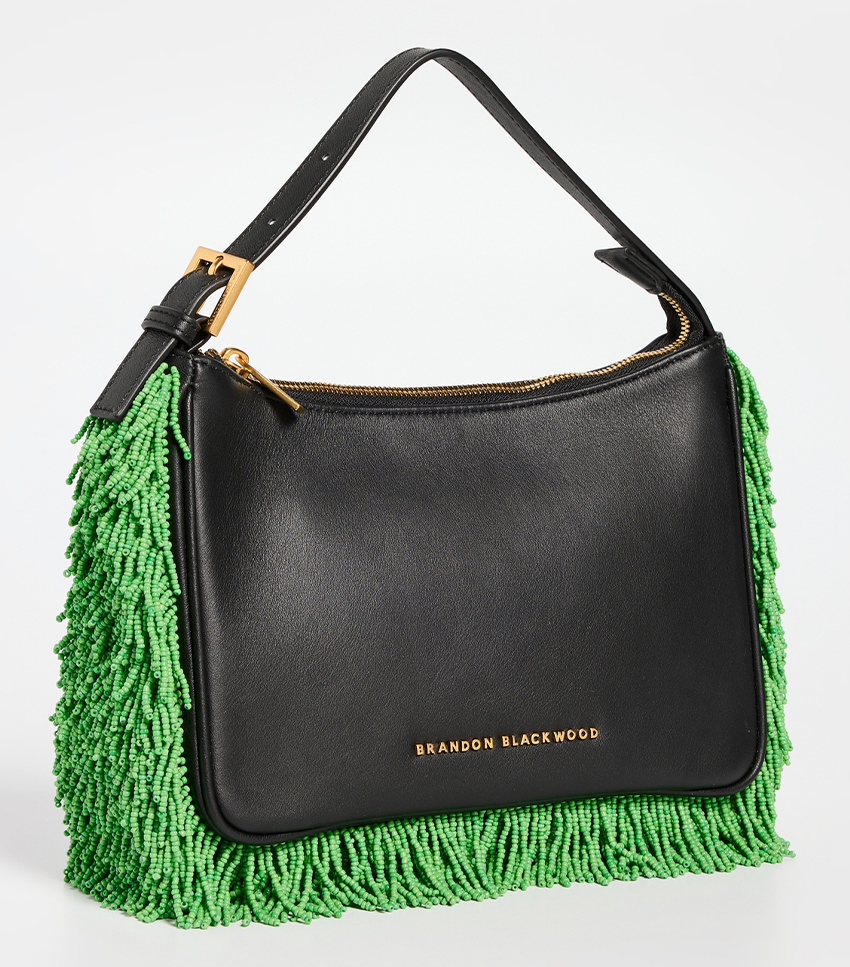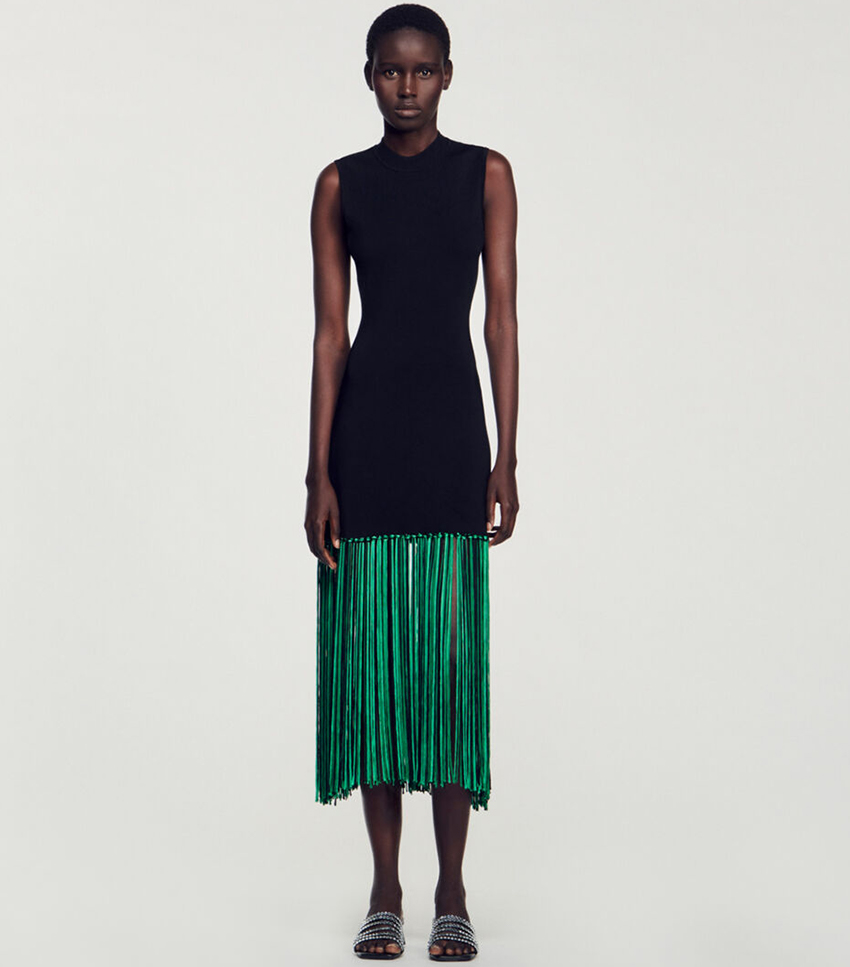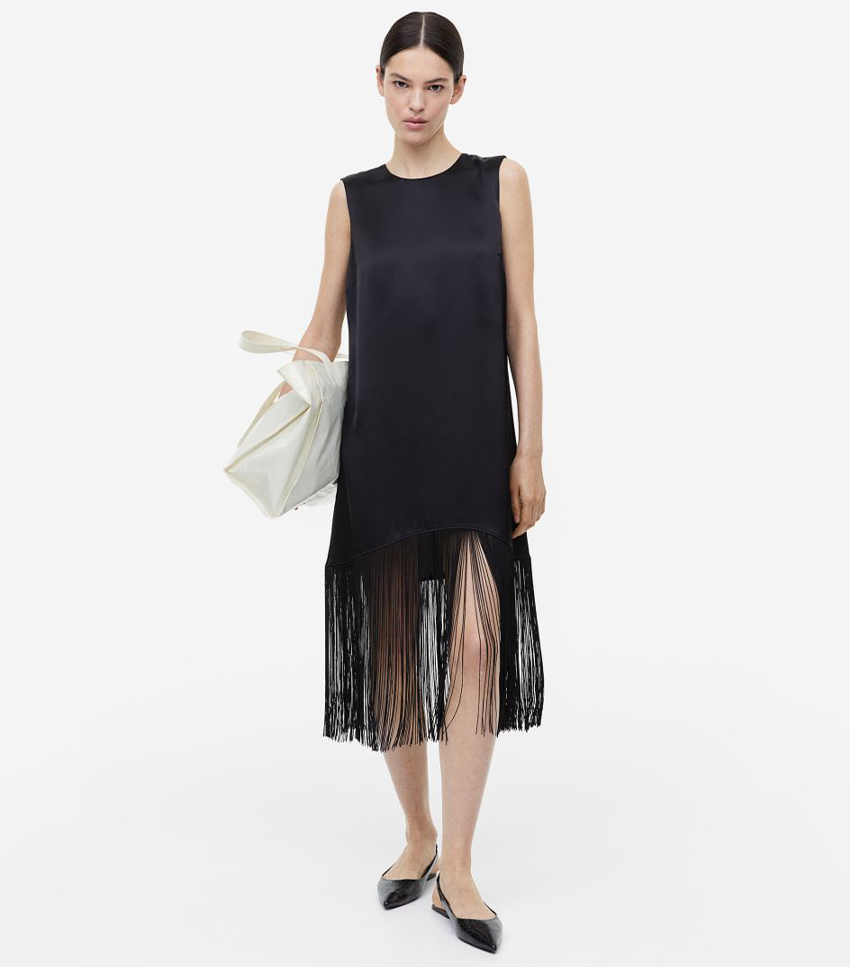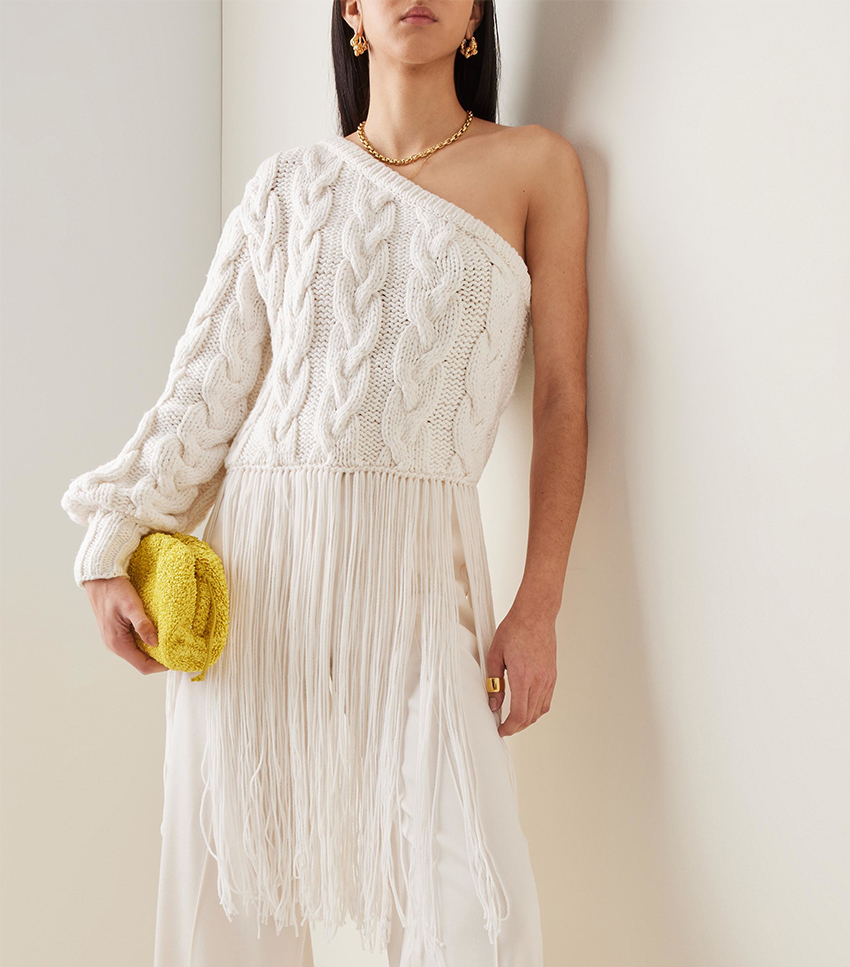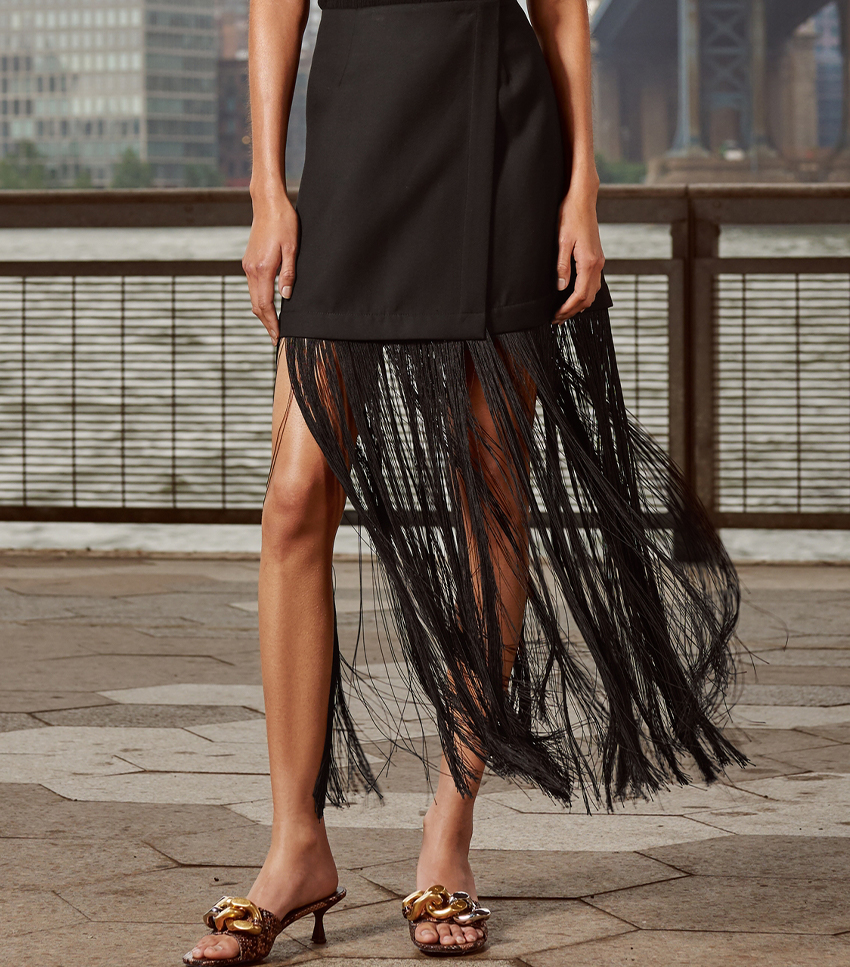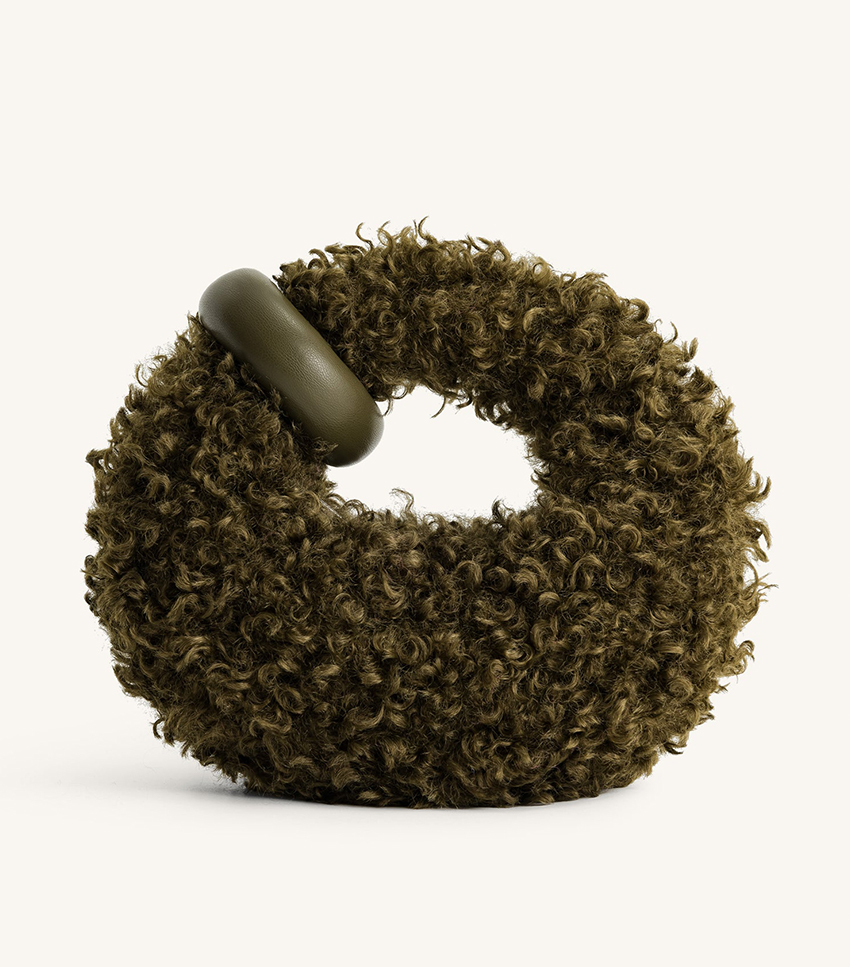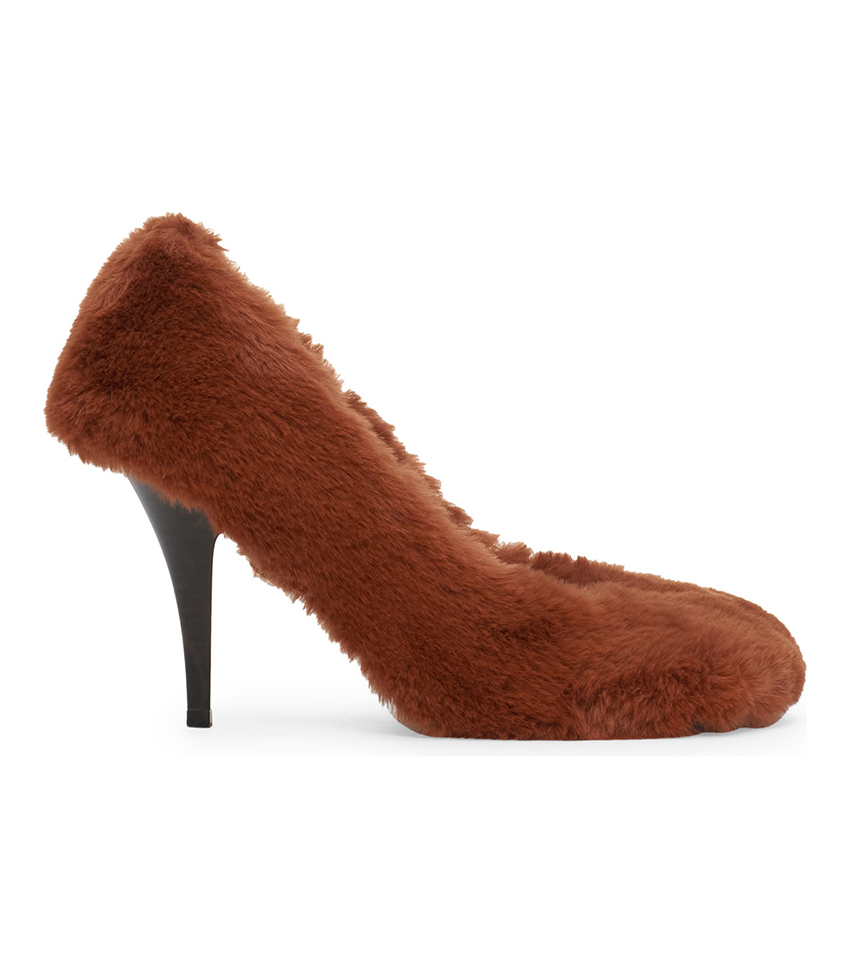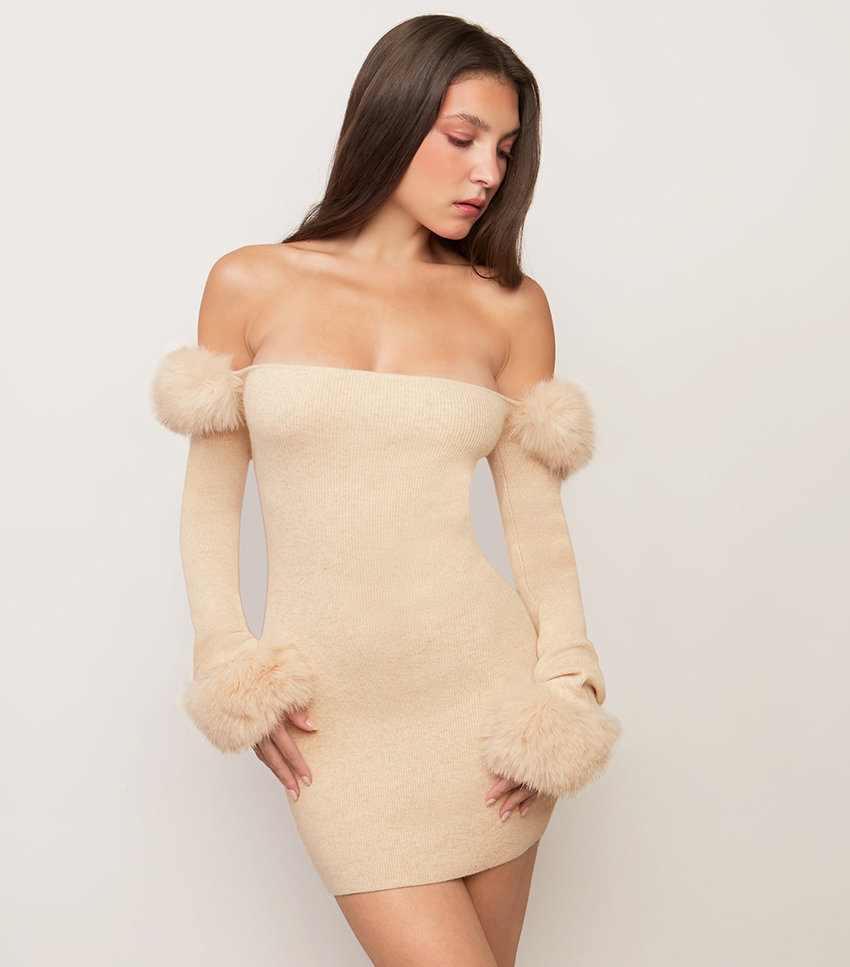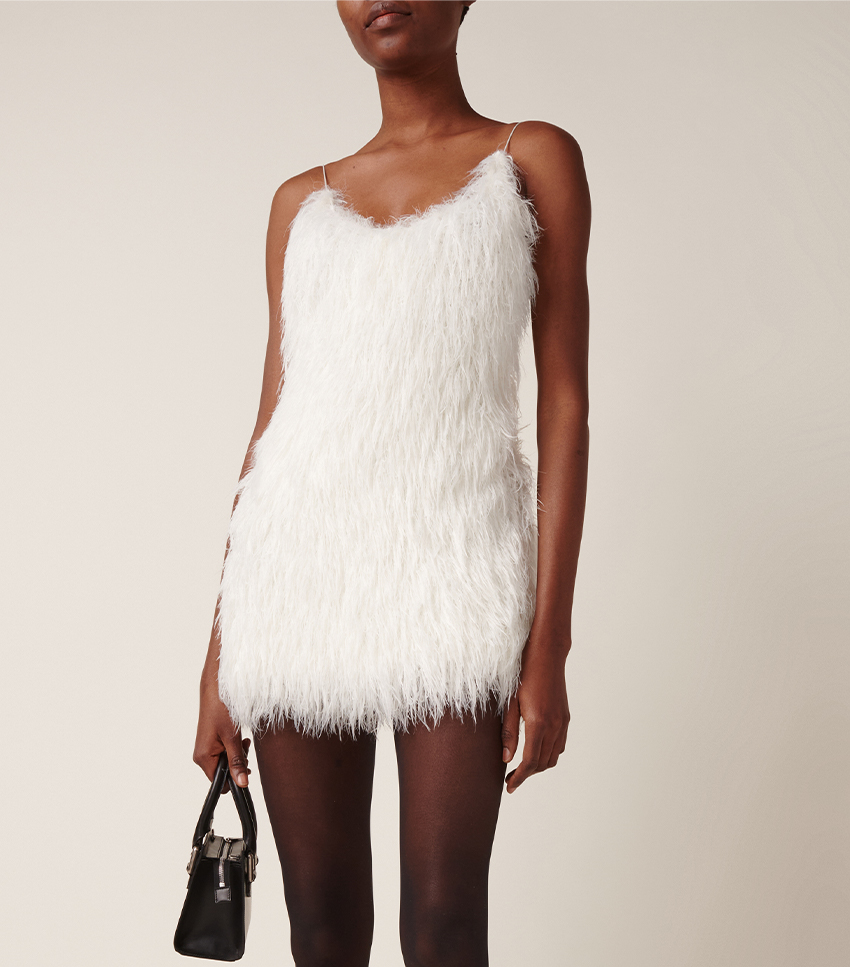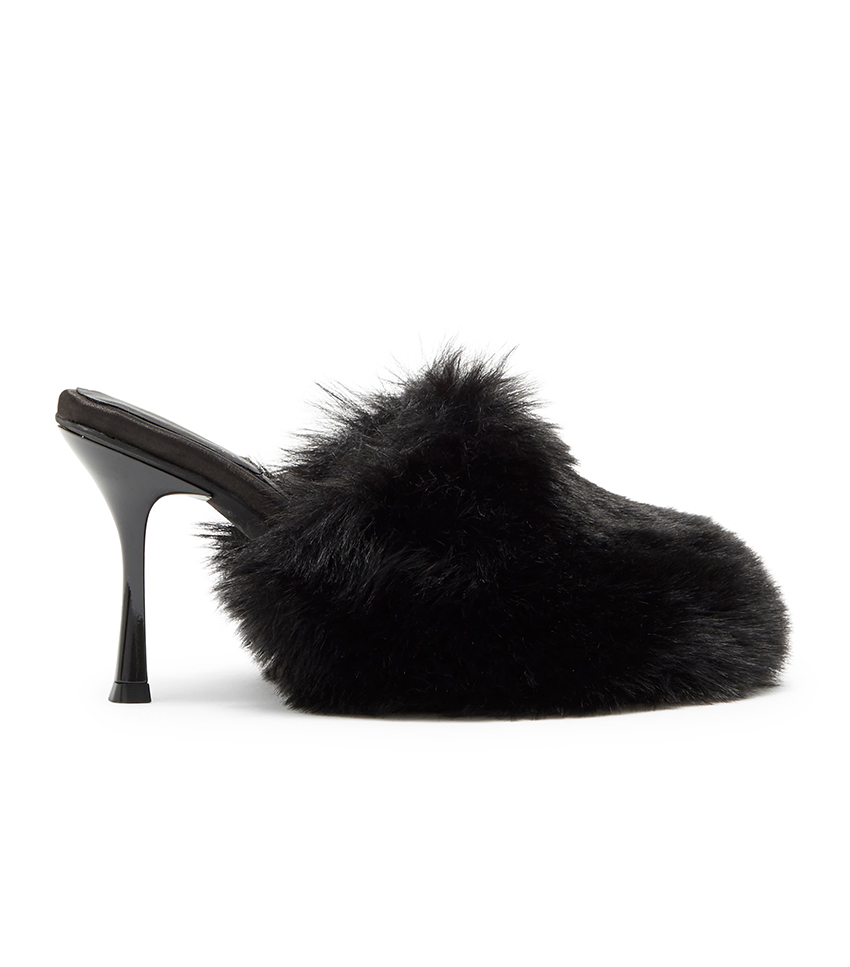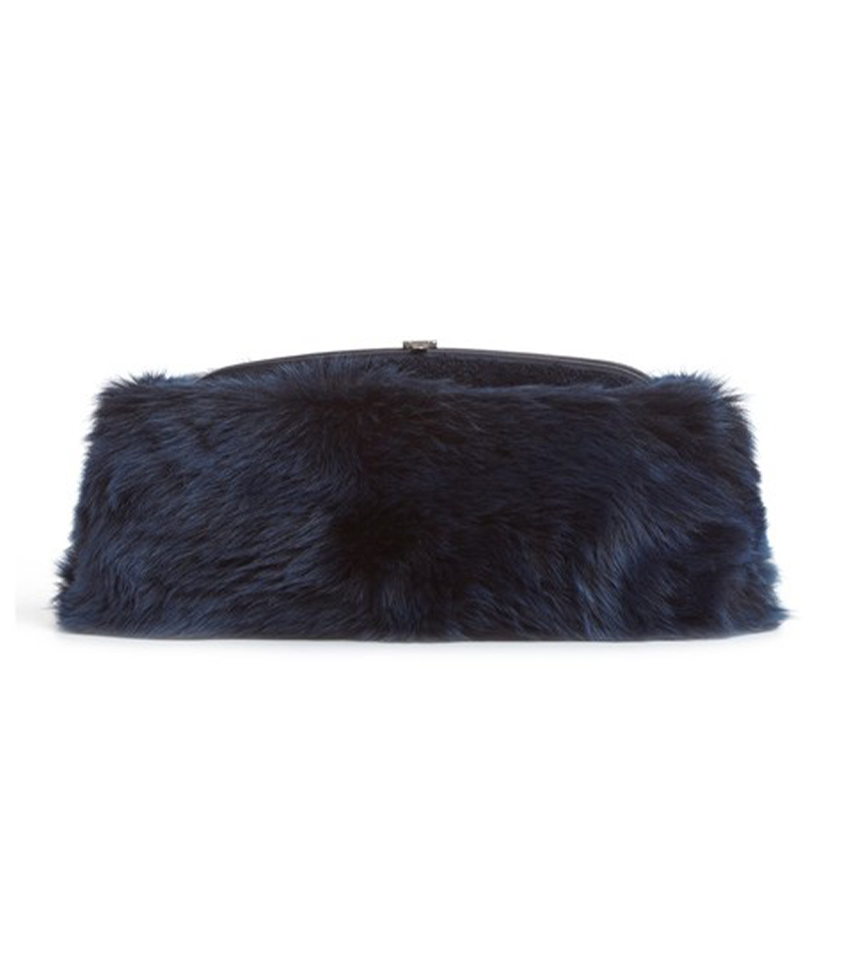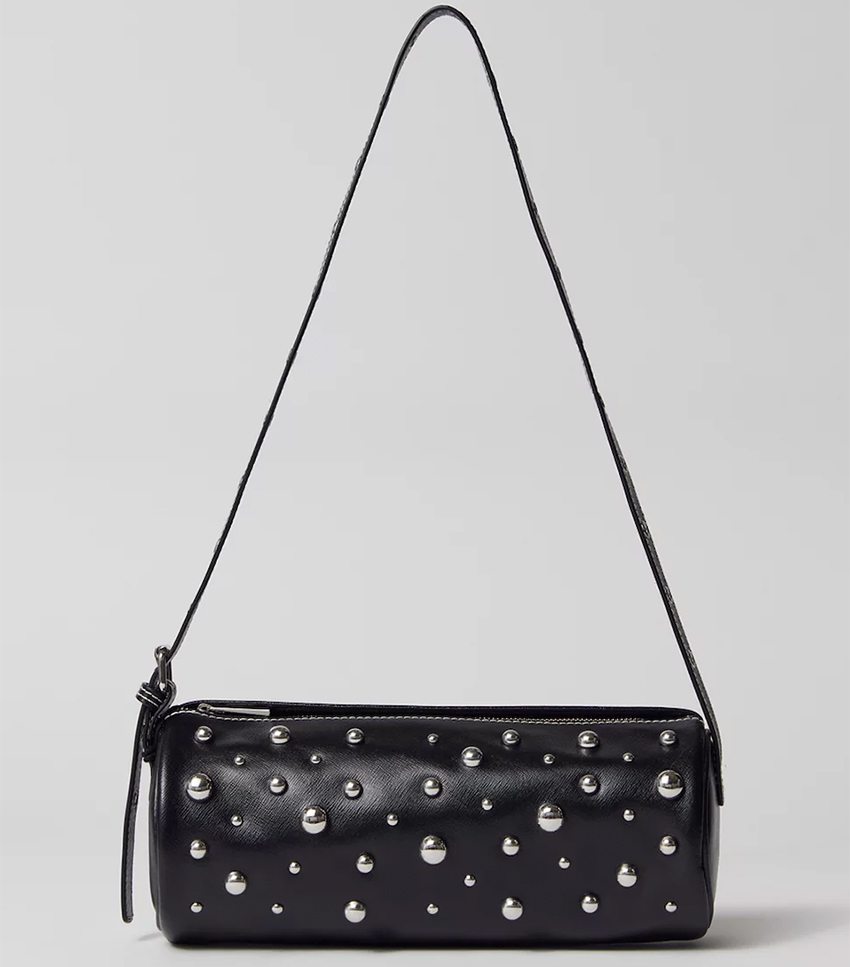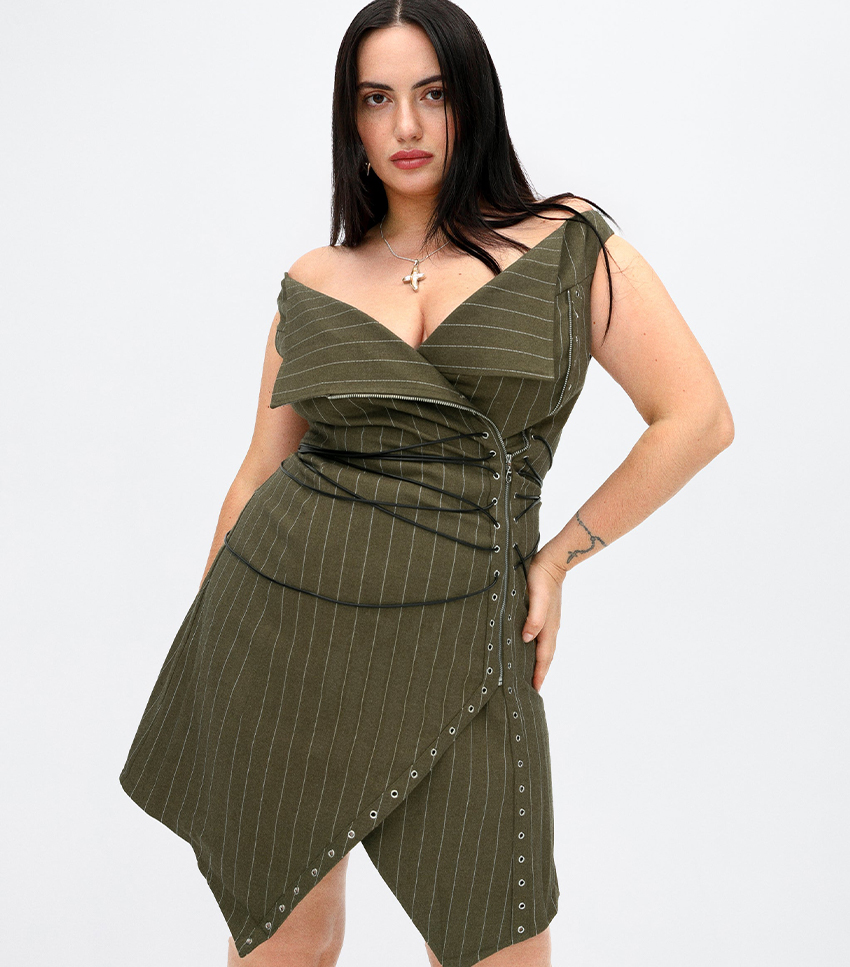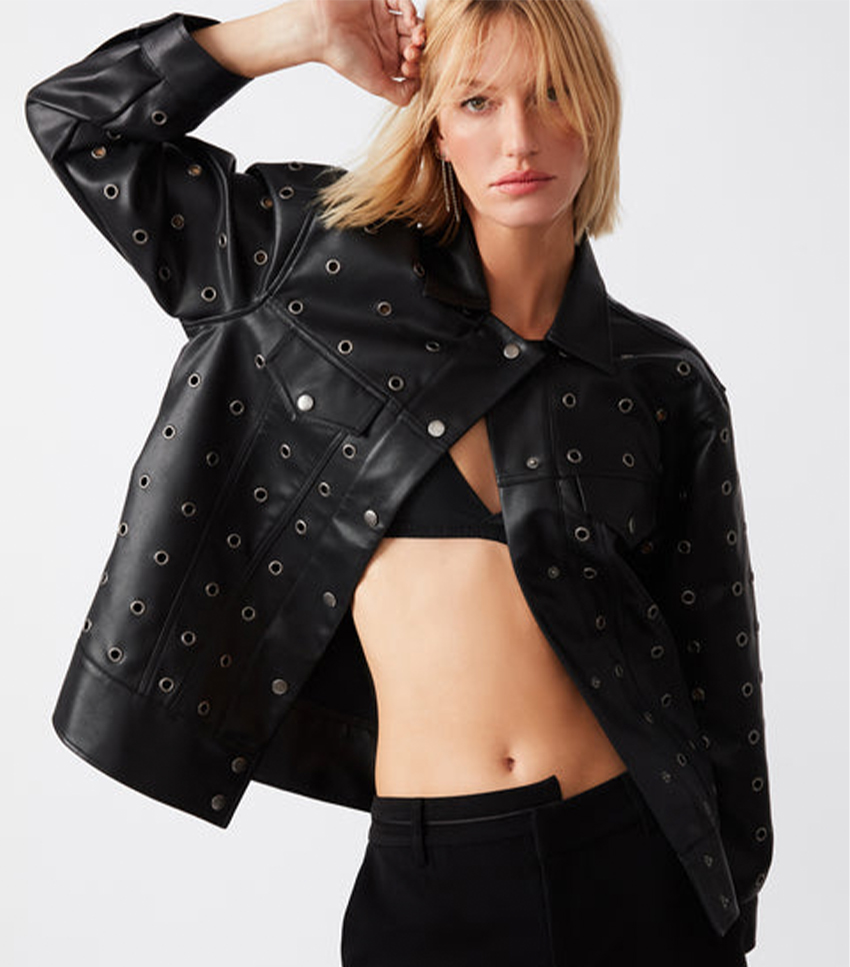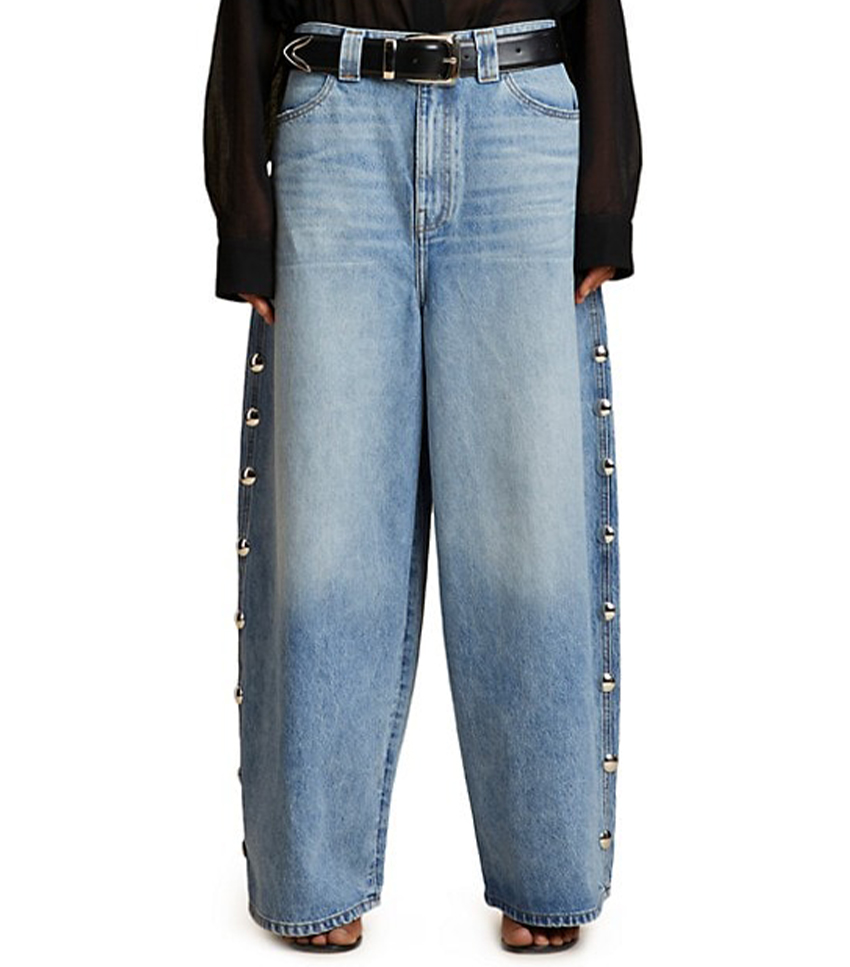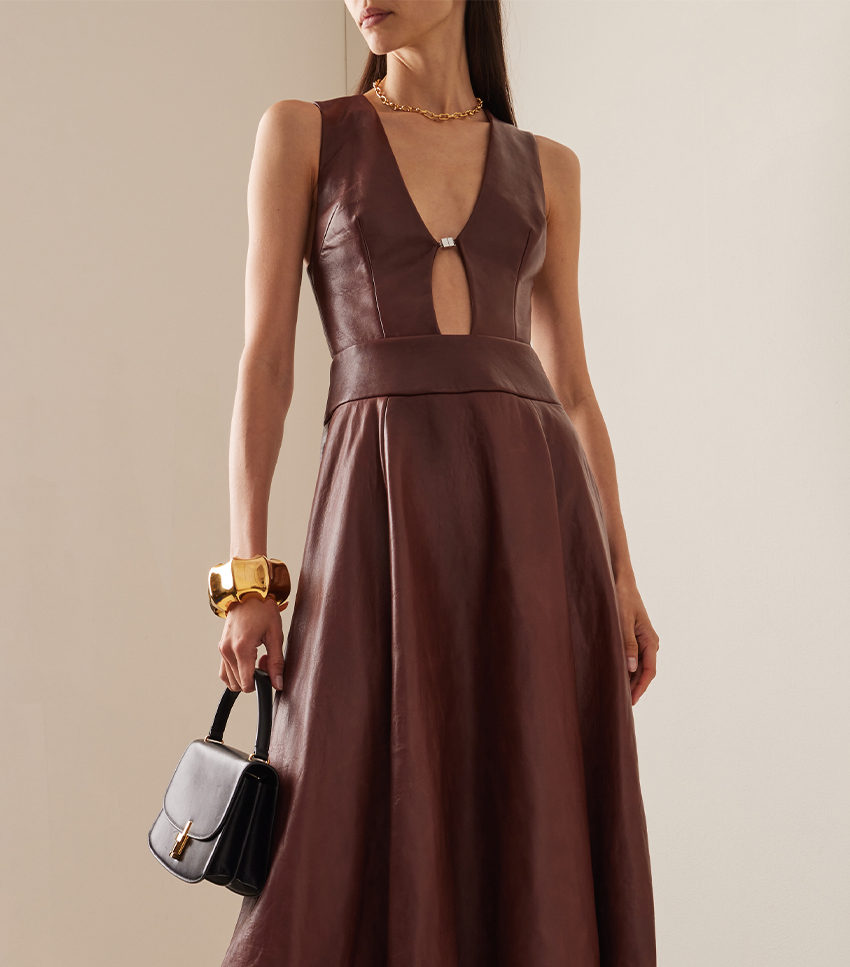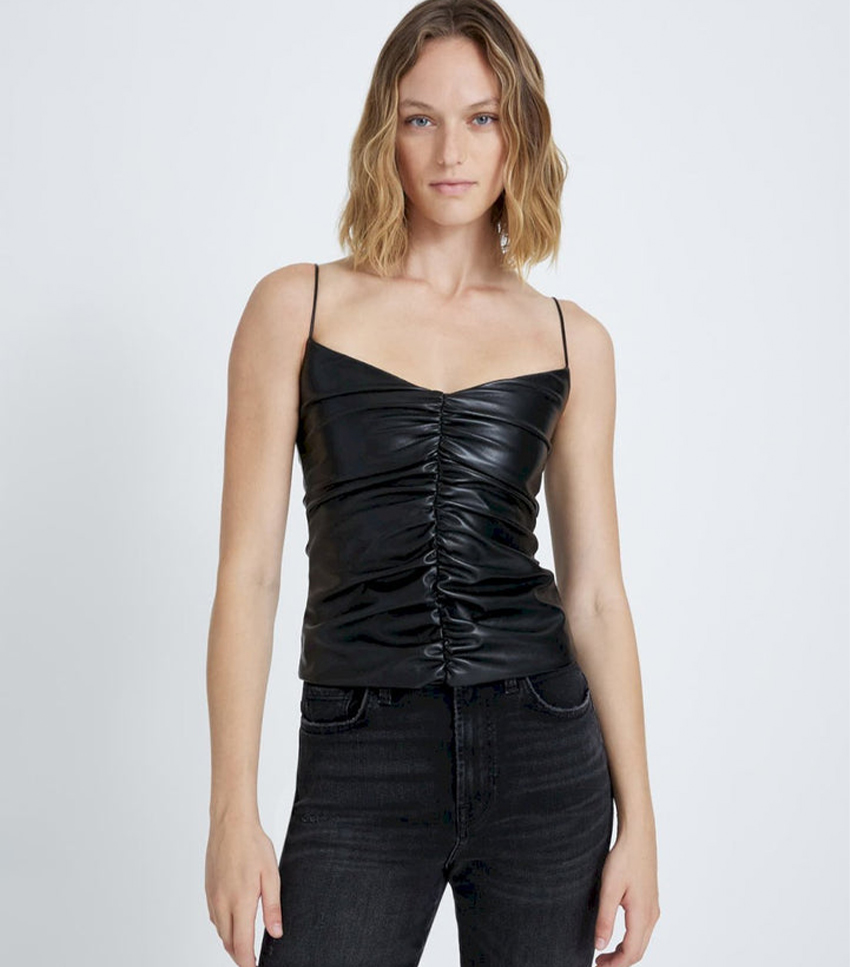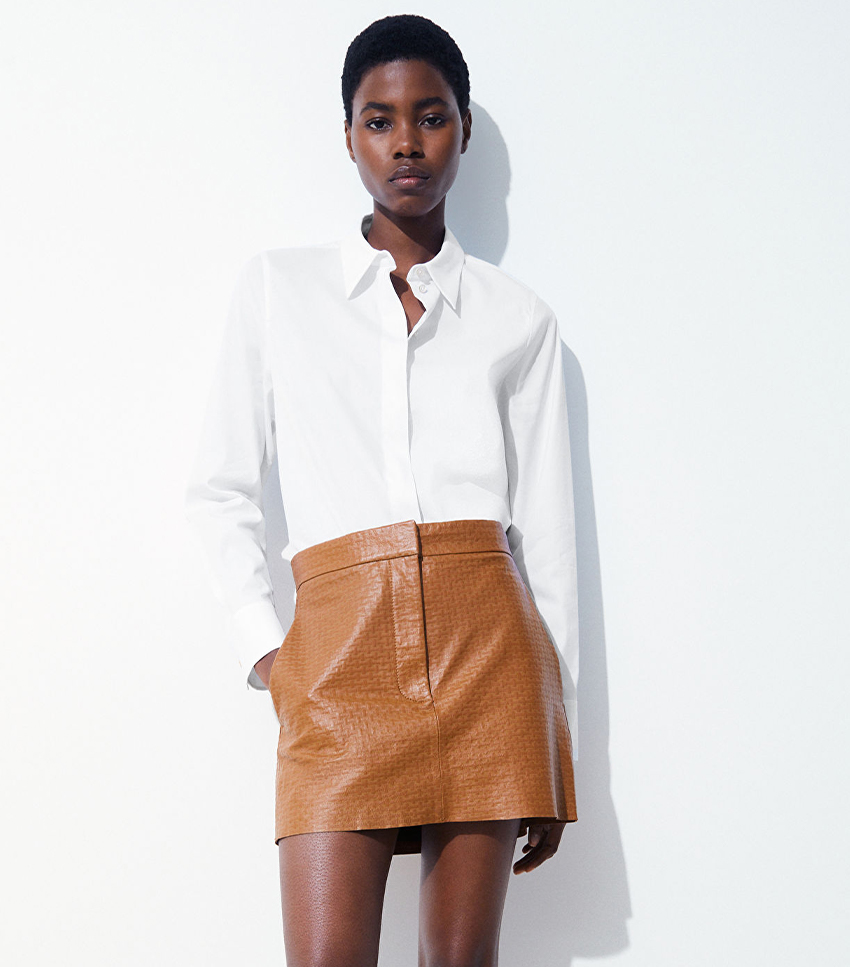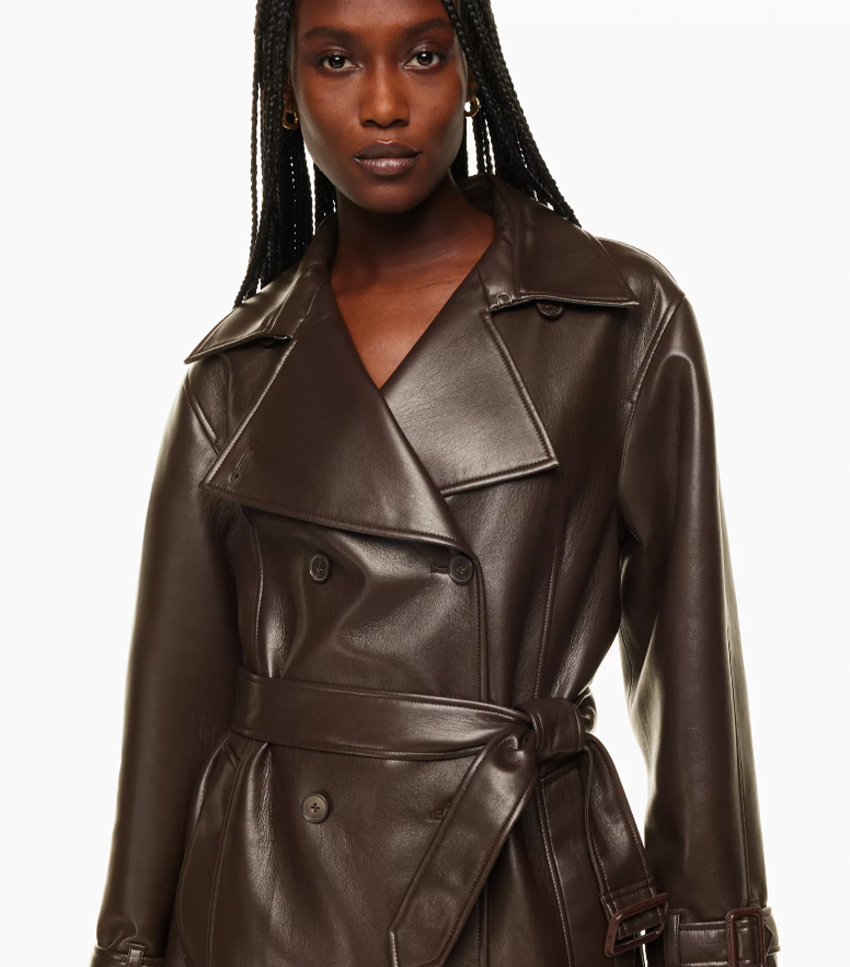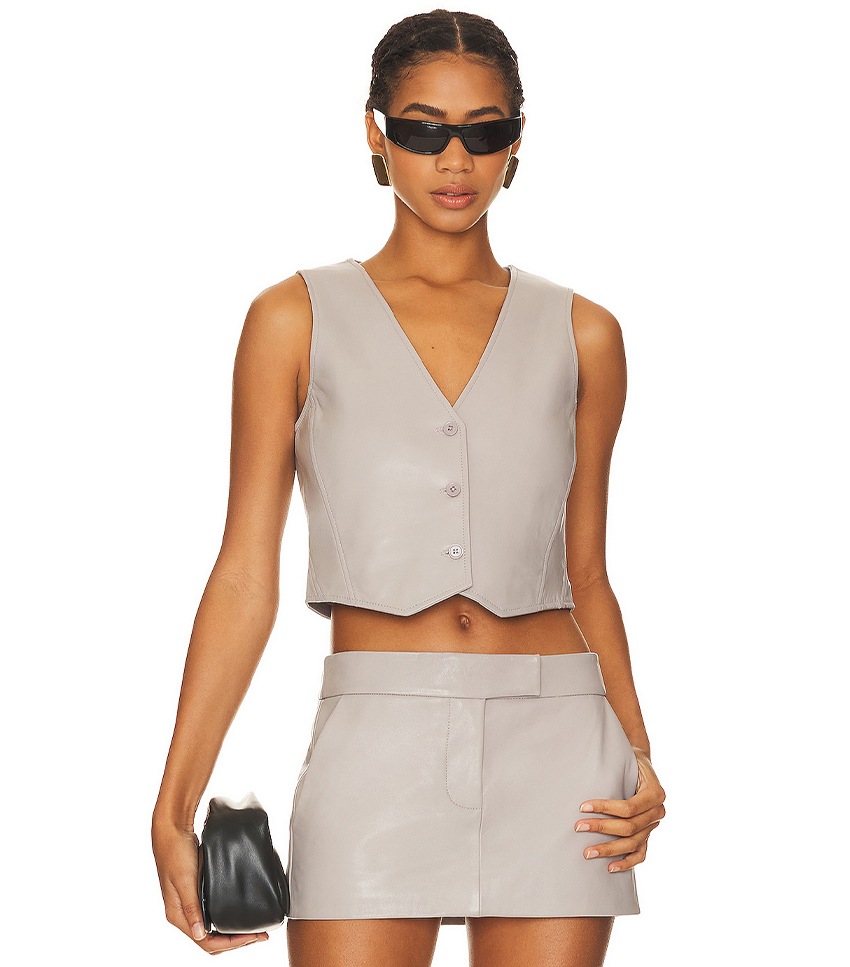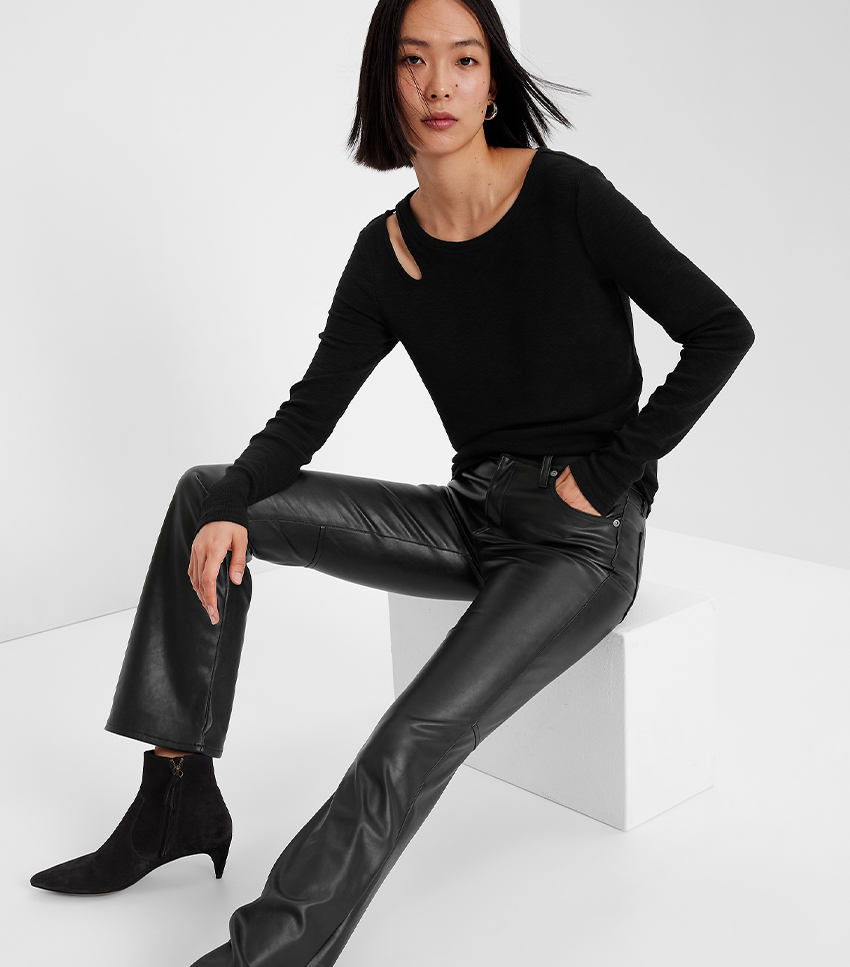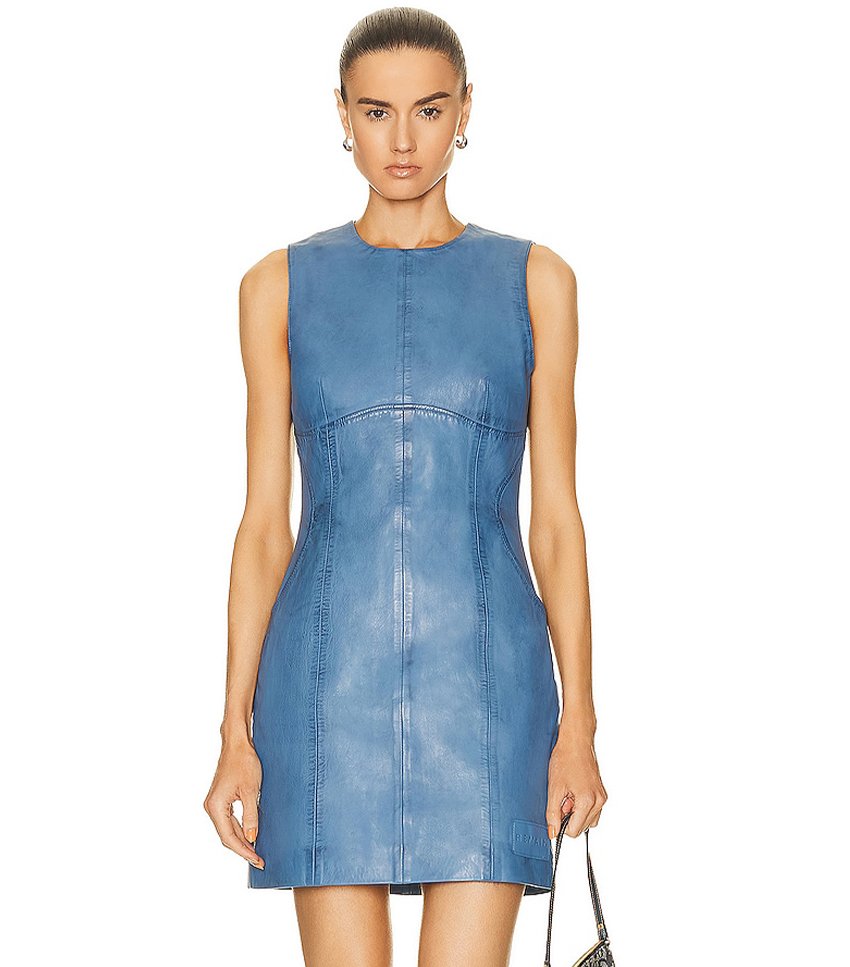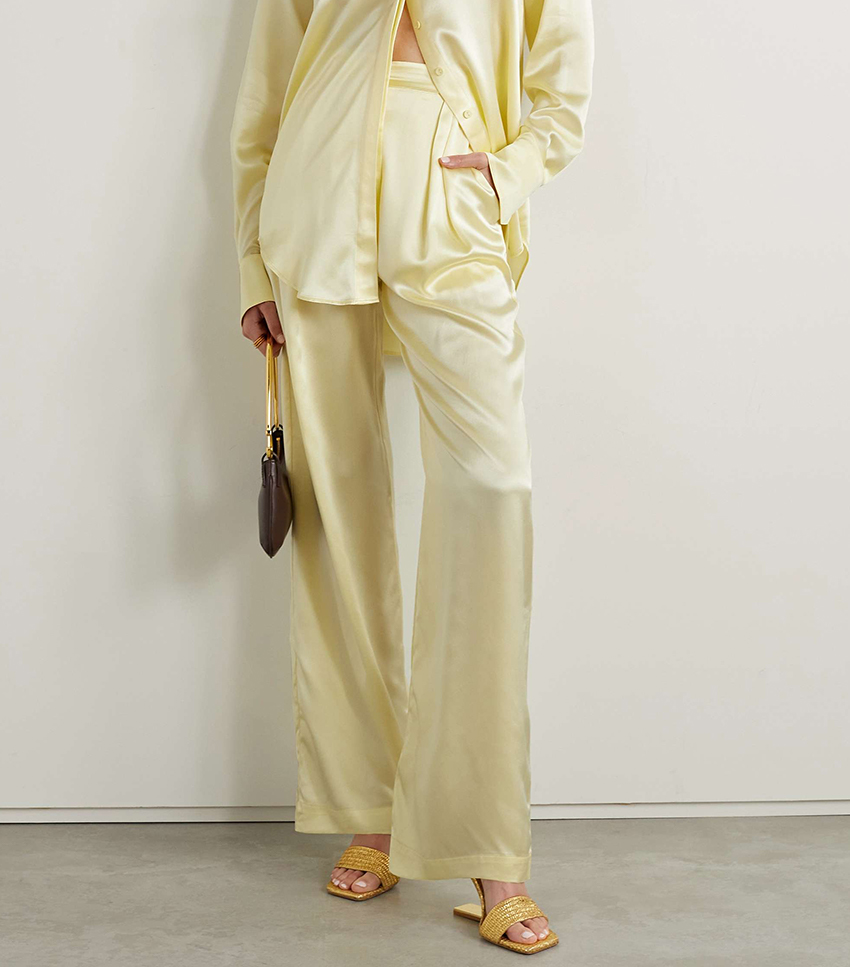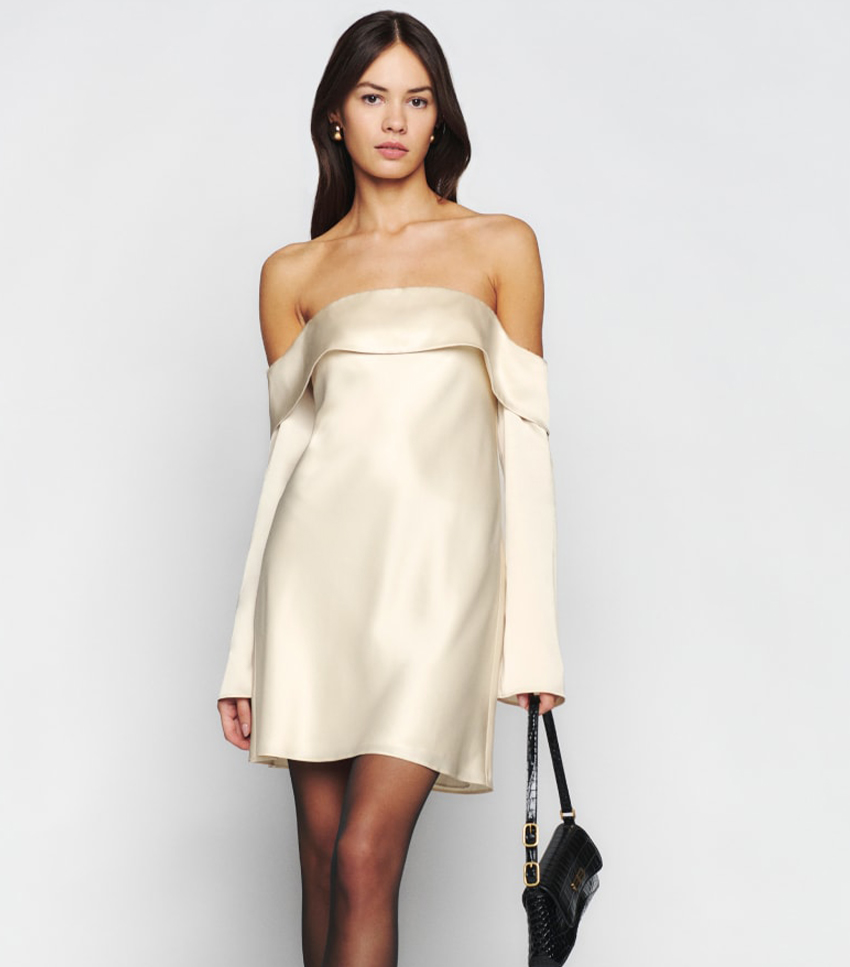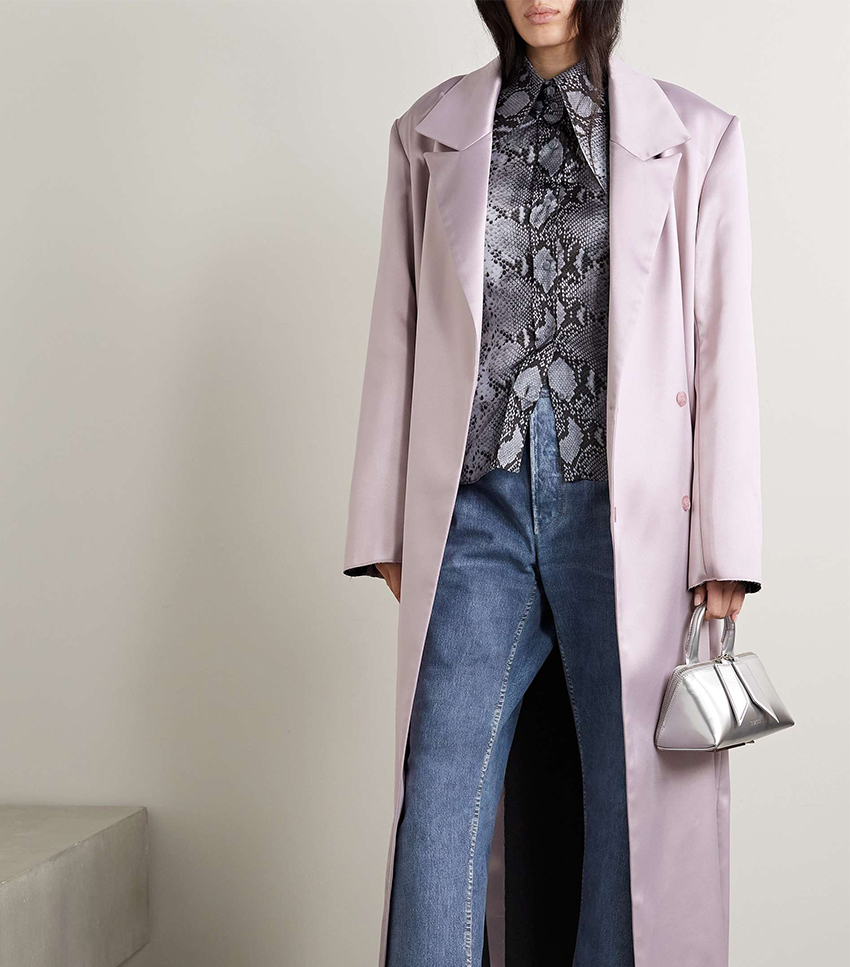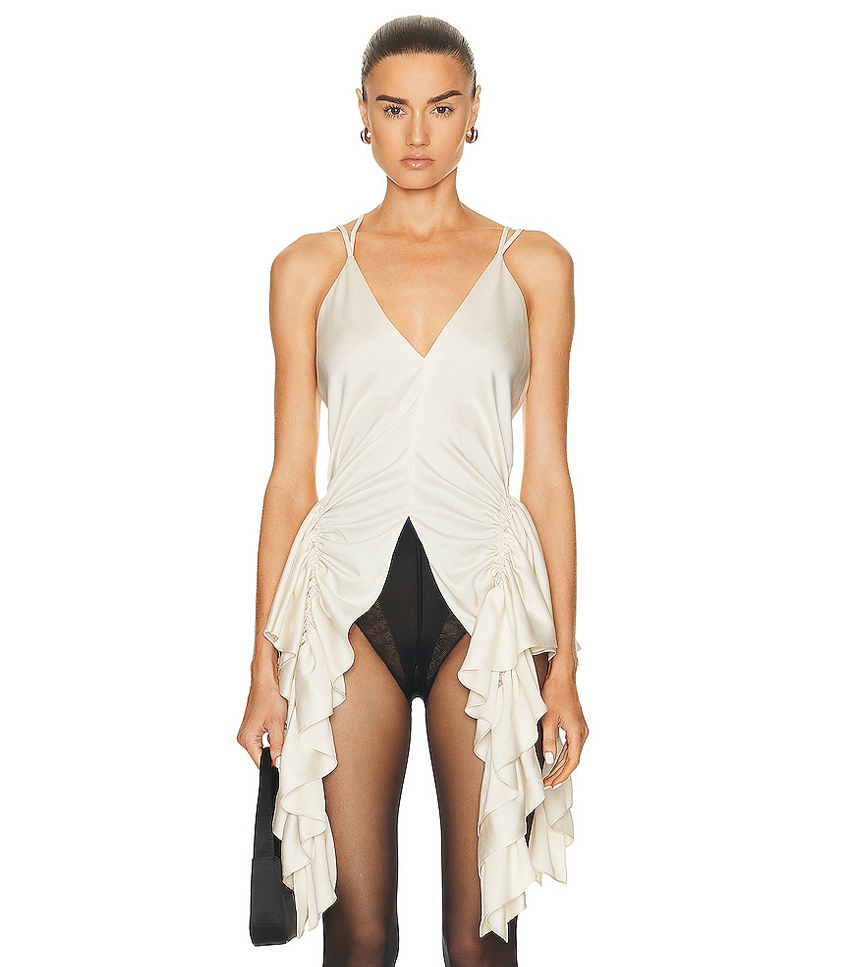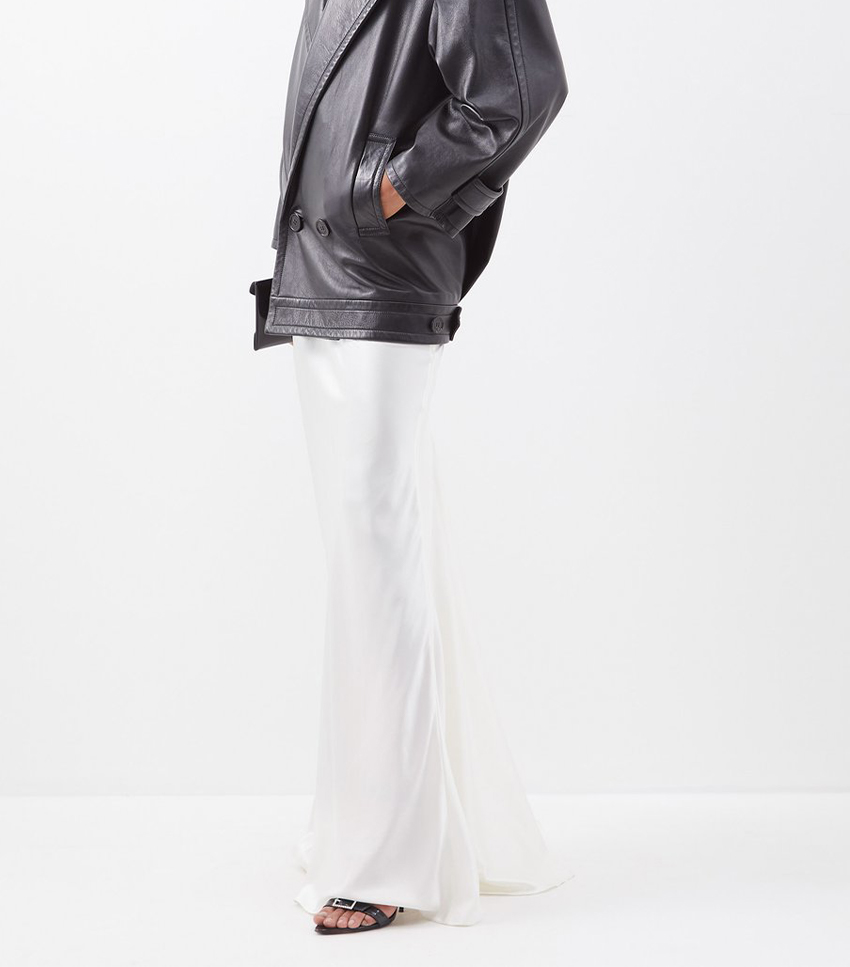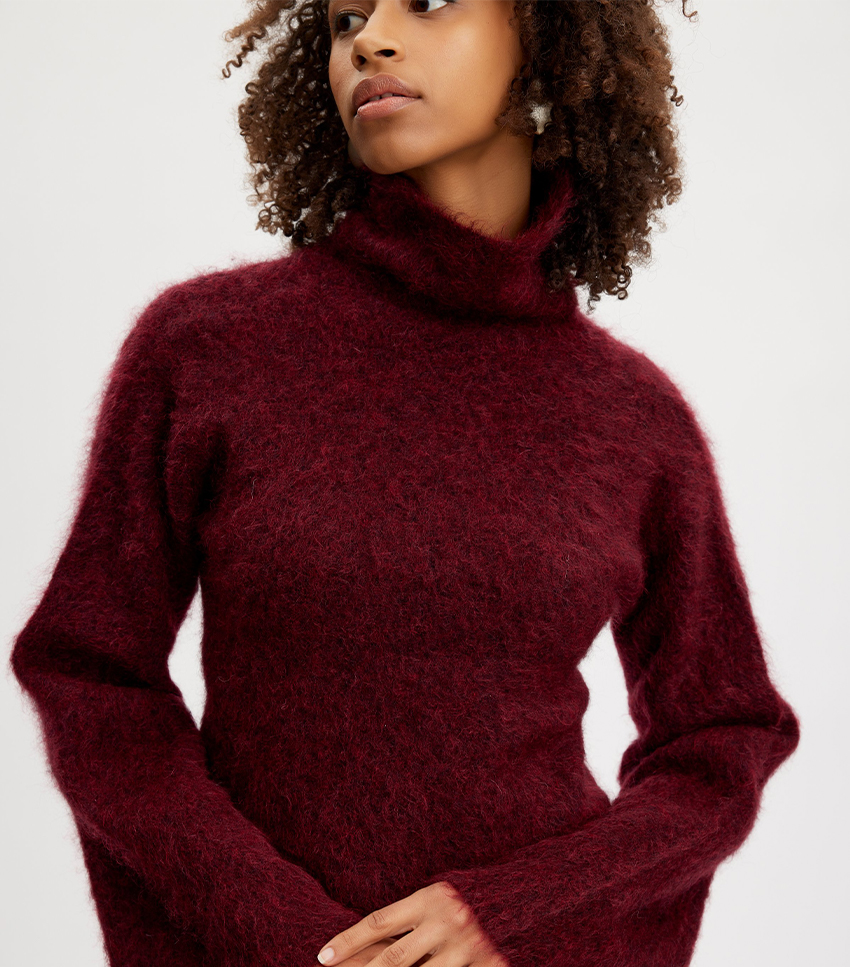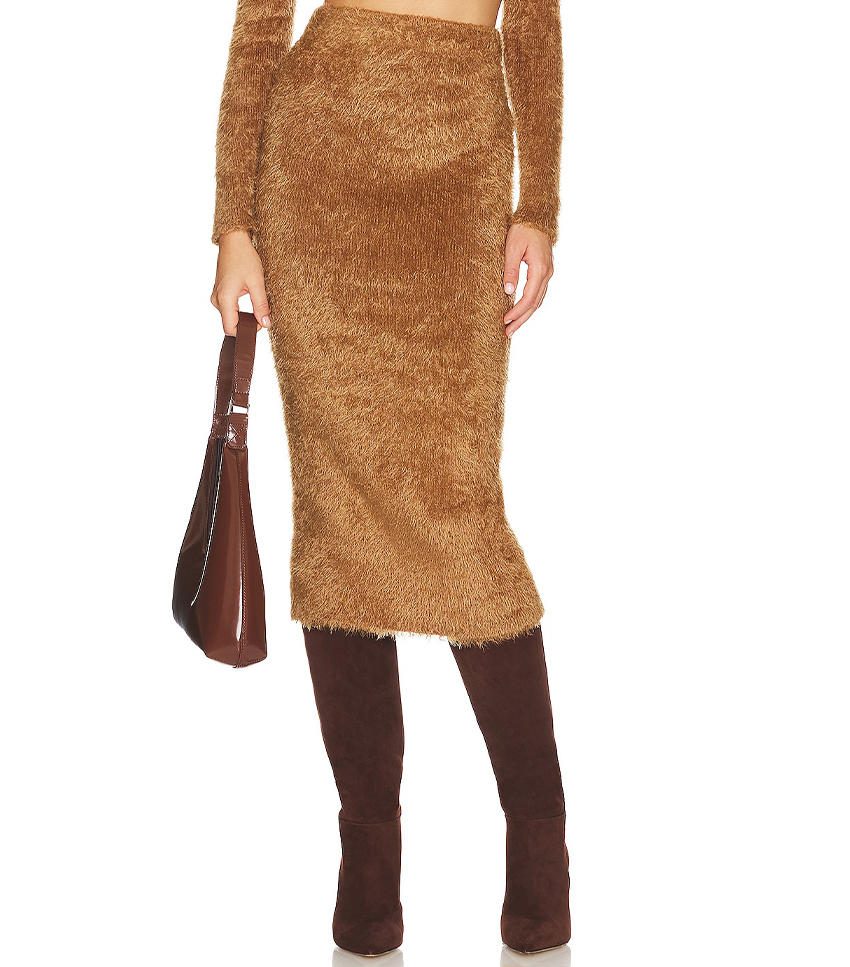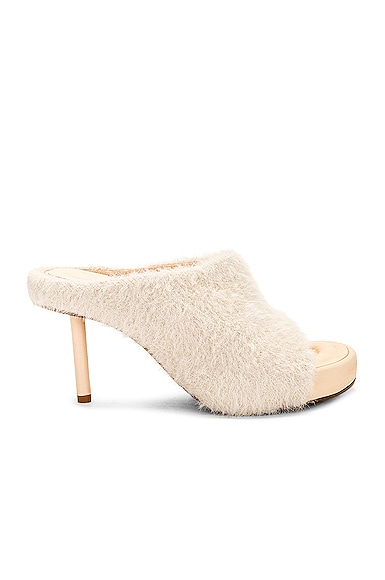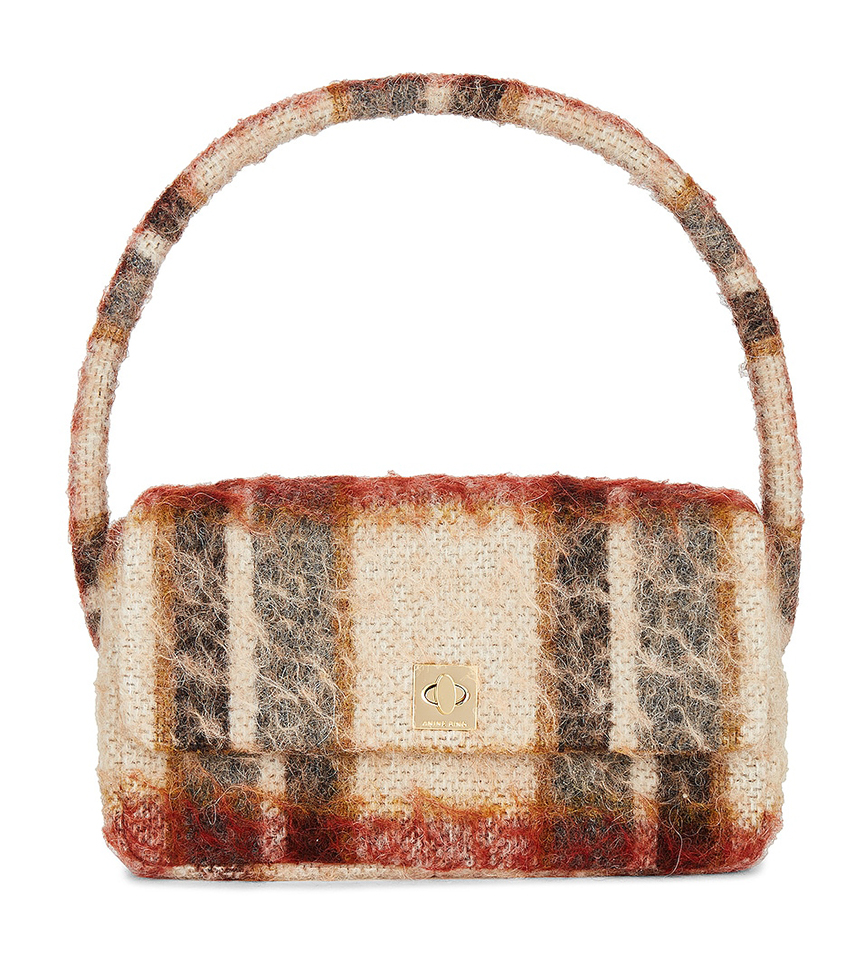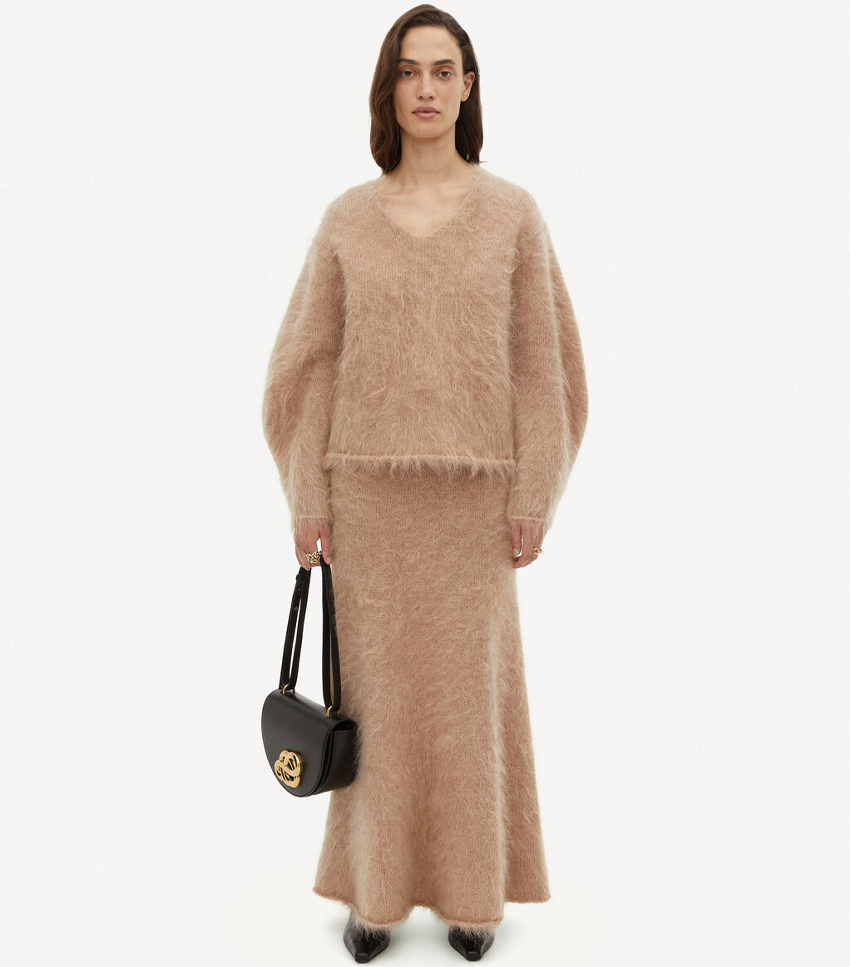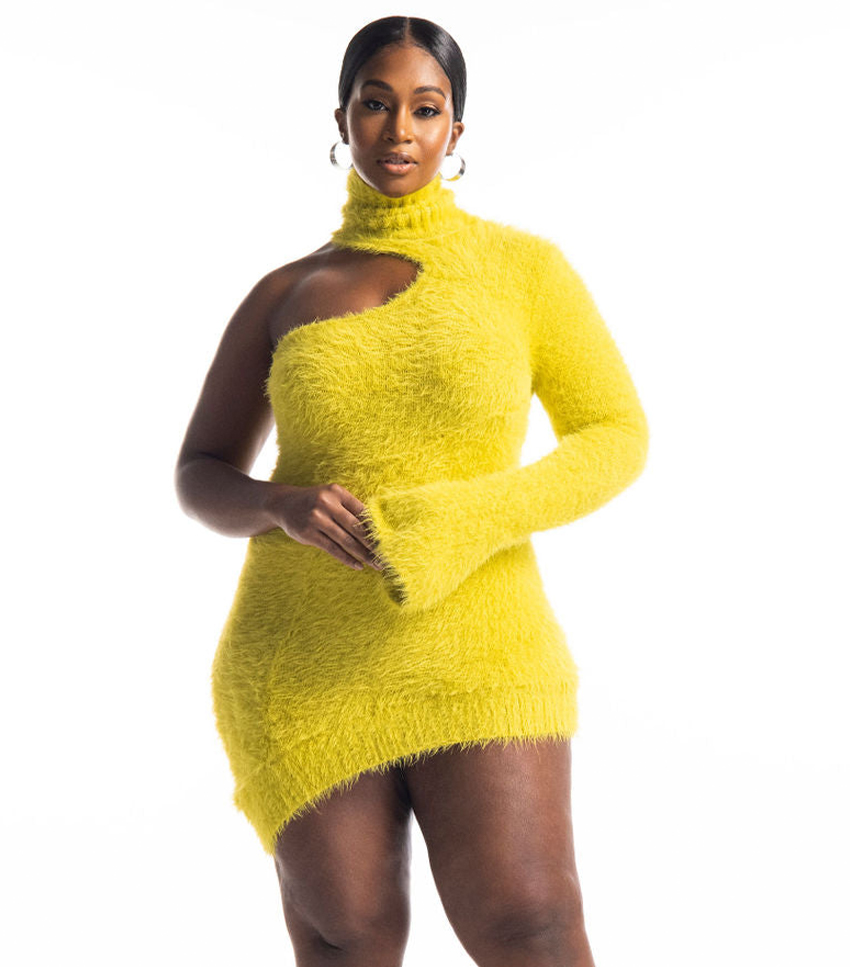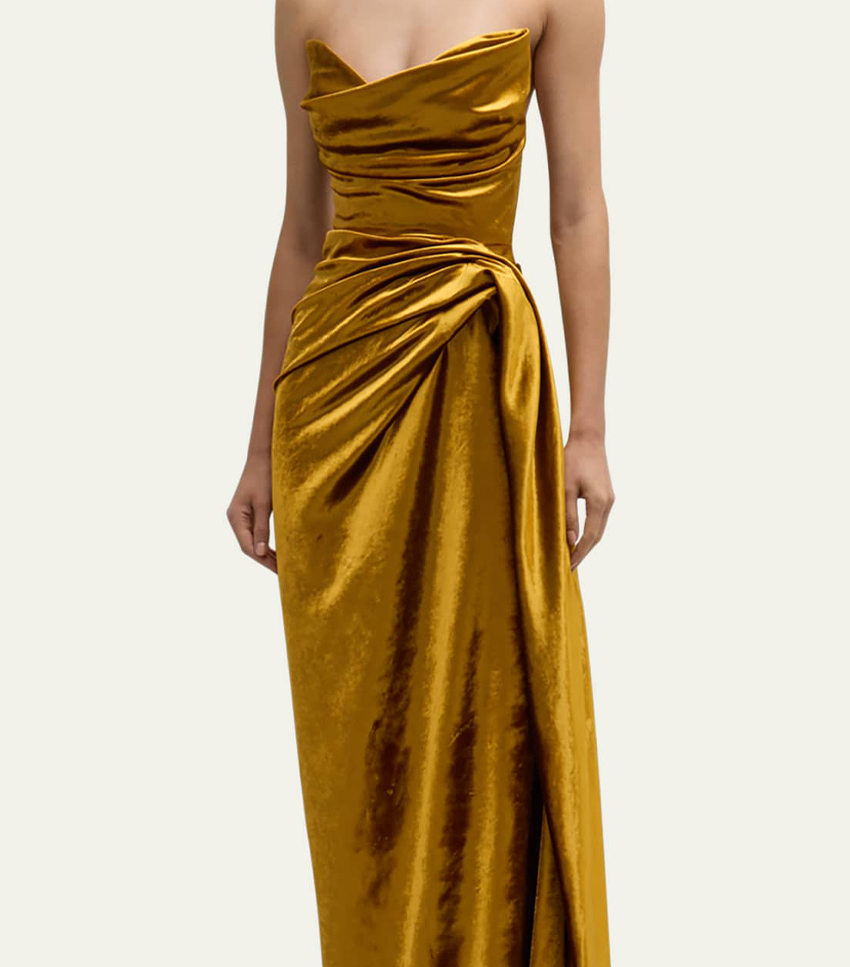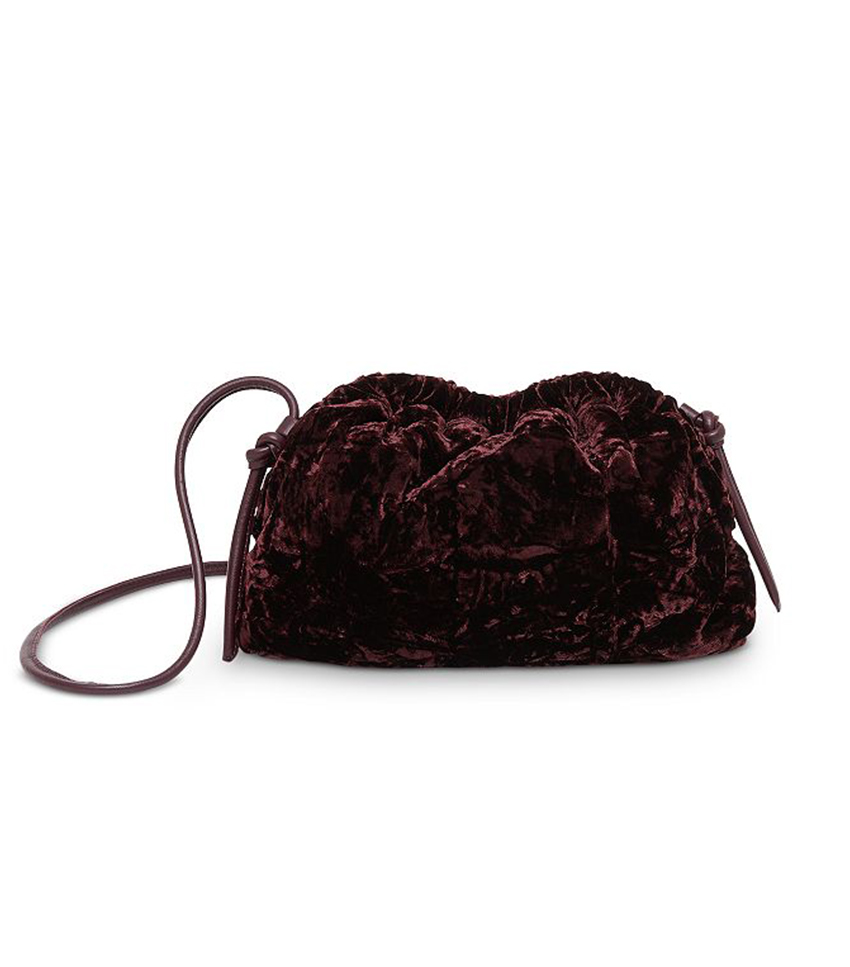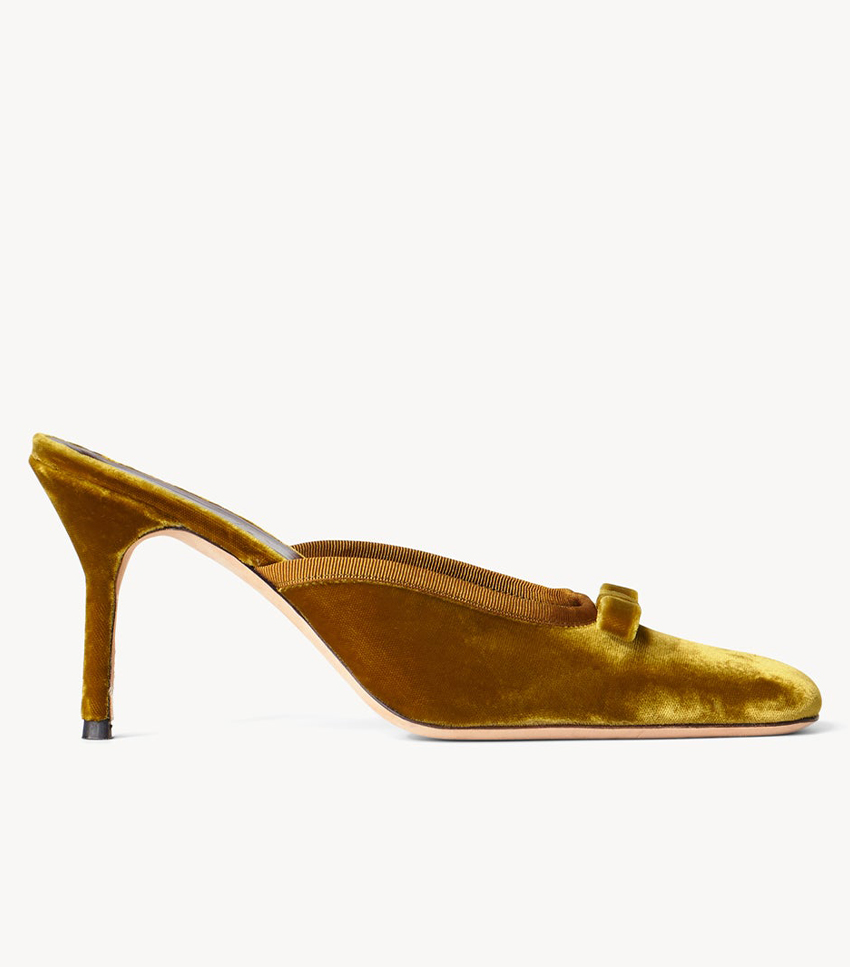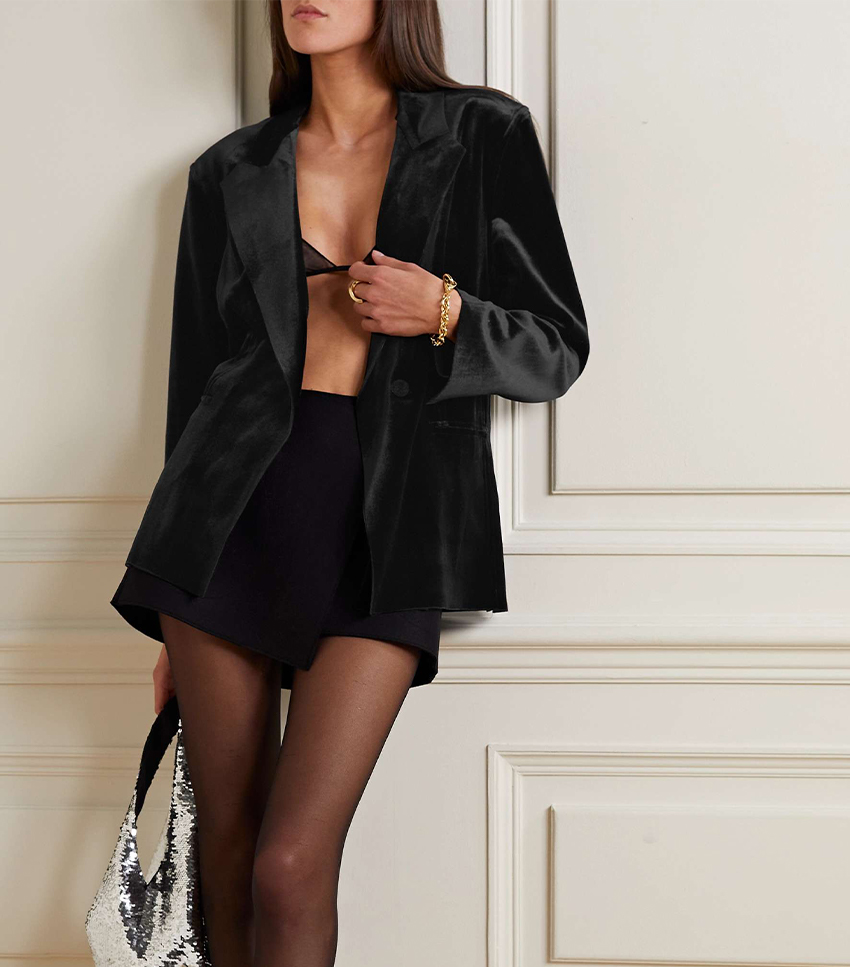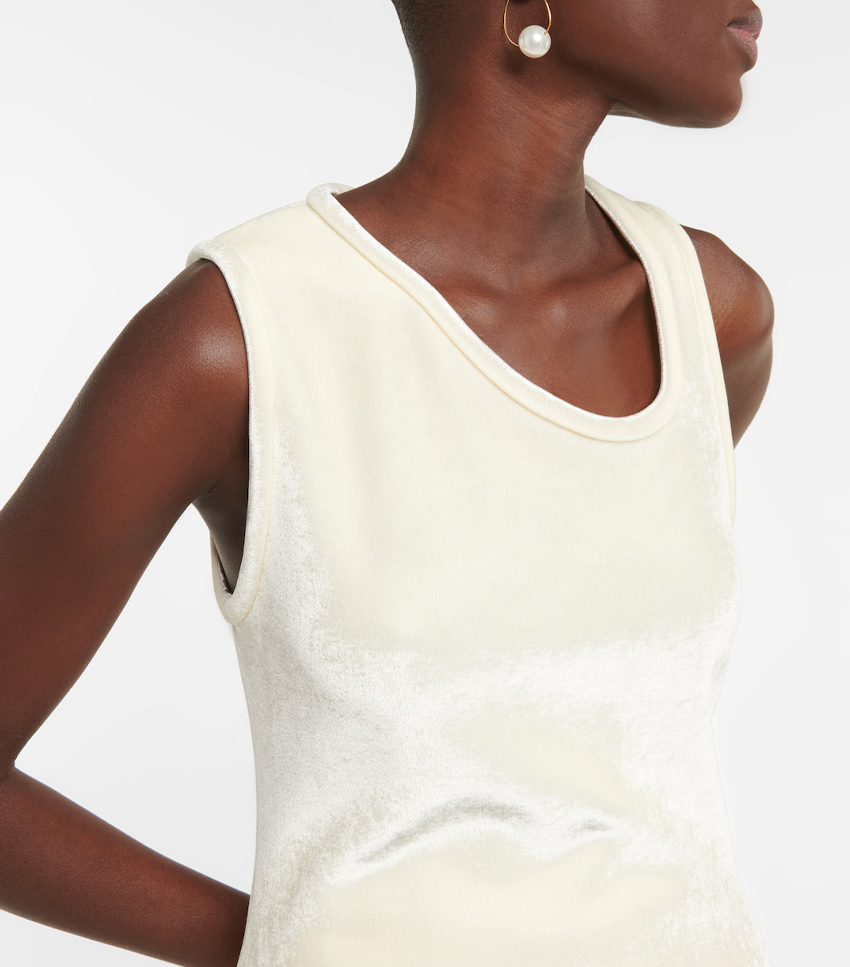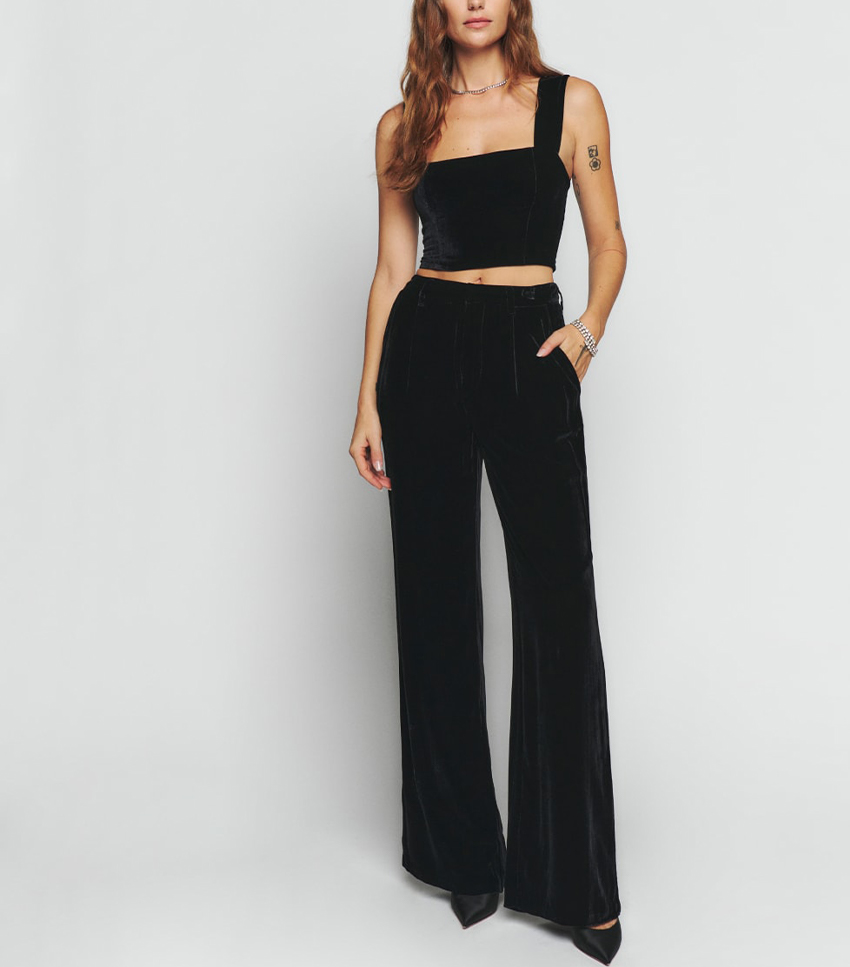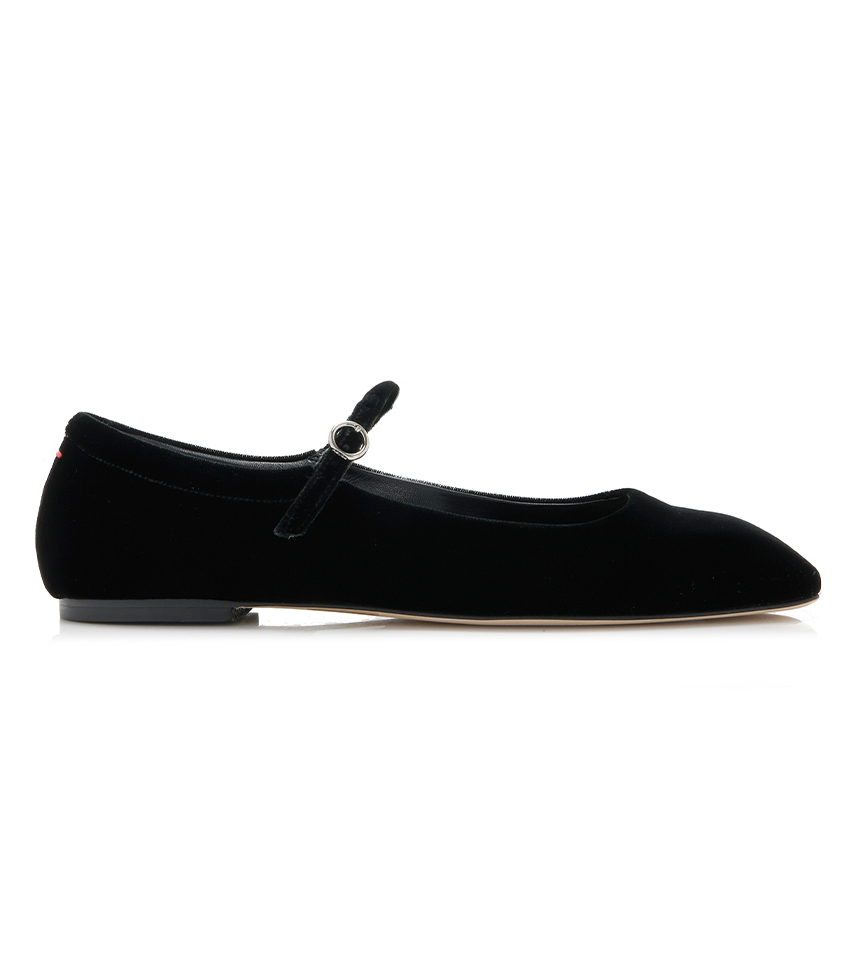Fall's Biggest Trends Will Feature This One Detail, so Get on Board
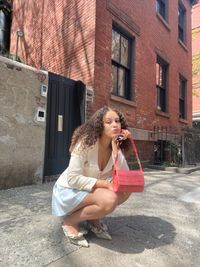

One could argue the greatest extravagance in a fast-paced world is the ability to slow down to marvel at the so-called mundane things. Or at least, that's the mindset of the late Hubert de Givenchy, who once said, "Luxury is in every detail." It's an idea that feels even more relevant at a time when clothing is produced far faster than ever before. As much as we all love to be able to tap into a trend quickly (guilty as charged), there's something to be said about how faster production has its negative impacts, not just environmentally but on craftsmanship itself. Clothing quality has not only gone down, but those minor details that dazzle us have slowly disappeared too.
Not all hope is lost; over the past few years, we've seen a collective shift toward a more sustainable-minded approach. How that manifests in wider pop culture is through the embrace of fashion aesthetics like "quiet luxury" or "old money," which are a more minimalist approach to building a wardrobe. While in recent seasons, we've seen designers put more of an emphasis on creating collections that embody the idea of ready-to-wear items that are foundational staples. But possibly the most surprising evidence of this shift lies in the details found in F/W 23 collections.
It's almost as if the past few years had steadily built toward a moment when the most significant trends weren't about a specific color or cut on hemlines but the textiles themselves. Make no mistake; materials always play a role on the runway—you can't make clothing without them. However, we saw so many designers playing with texture to add a dash of decadence to otherwise simple silhouettes this season that it was hard to pass it up as a coincidence. But if you're still a bit dubious about how texture could be considered one of the biggest trends for fall, keep reading. Ahead, we've done a deep dive to identify the nine textiles that were a defining part of various collections that lend themselves to being great long-term investments for any fall wardrobe. Though seemingly minor, they'll convince you that luxury lies in the details.

For an objective onlooker, F/W 23 collections seemed to air on the side of austerity over flamboyance. Yet, zooming into the runway images tells a different story, one in which texture is used to challenge our perspectives. That's most evident in the comeback of one surprising textile: corduroy. While this material may conjure memories of its heyday in the '70s, designers have transformed this formerly "dated" fabric into something cool. The greatest example of this is Miu Miu's F/W 23 collection which was centered around the idea that "materialization can actively change how outfits are visually read and how we understand them," according to the brand's press release. That focus on textiles was fully displayed in oversize blouson jackets, fitted pencil skirts, and pleated shorts, all made from corduroy. But it wasn't just Miu Miu that used this textile to shift our perspective subtly; we saw corduroy used to dramatize both hemlines and hues across various brands. For example, an overly boxy blazer and oversized relaxed trousers at Vegan Tiger looked visually more prominent with a yellow corduroy. While at Baum Und Pferdgarten, a rosy pink was given a dramatic touch with corduroy. And then, there was Lovechild1979's collection, which featured a corduroy skirt layered over matching trousers to emphasize the textile itself. Each iteration of this textile on the runway exaggerated the clothing and raised its cool factor.

Without fail, you'll always find certain textiles in fall collections: knits, leathers, wools, and so on. But the material that always manages to slither its way back onto the runway season after season (without much fanfare) is faux exotic animal skins. Snakeskin, ostrich, crocodile, and lizard-inspired materials have been around for longer than a millennium, yet designers managed to take them through a metamorphosis this season. That was achieved most notably in Dion Lee's F/W 23 collection, which was centered on the idea of the "shedding of skin." It was executed through multiple looks that gave the illusion of peeling skin, including a draped snakeskin dress held together by rhombus-shaped hardware. While Lee's interpretations of this fabric were quite literal in how they went about shedding any former preconceptions related to these animal skins, other designers used tailoring to transform this textile. For example, at Puppets and Puppets, a saffron-red snakeskin was given a sexier twist by creating trousers with a pelvic cutout and matching moto jacket. While at Rokh, snakeskin was given a more feminine touch by taming into a dress silhouette featuring a high-boat neck and a side panel of pleating. And then, there were Lanvin and 16Arlington's collections, which featured classic trench coats in punchy patent crocodile textiles. If these collections taught us anything, it's that faux exotic materials aren't just for the accessories; they've far more potential up their sleeves.
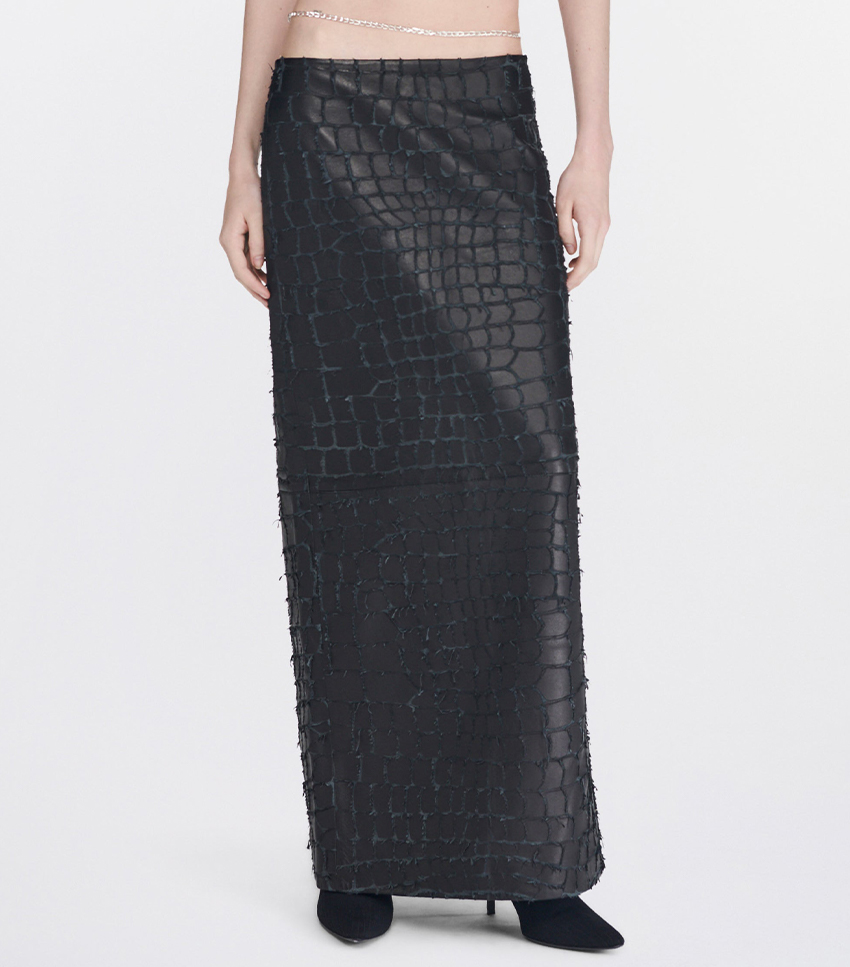

Over the past few seasons, fringe has slowly bubbled up as a trendy ornamental trim. However, with F/W 23 collections, it became evident that it was no longer just about having a few extra trimmings but using them to create their own subcategory of texture. It felt as if they were embraced to the maximum to meld the trappings of the material world with the magical and the past to the present. Or at least, that's what one can assume after looking at Paco Rabanne's collection. Designed by Julien Dossena to pay homage to the late couturier's legacy, multiple looks were adorned with sharp-looking metal fringe to look like a "fantastical mechanized creature." That mystic element wasn't just embodied in Dossena's work, though. It was felt in other collections too. Similarly, Matthieu Blazy for Bottega Venetta drew from various historical mythologies surrounding futurism to create "chimerical creatures"—one look that embodied this was a tweed coat sliced to create prominent fringe. The bounds of the imagination weren't solely limited to the fictional. For Marco Capaldo of 16Arlington, the collection drew inspiration from the late Federica 'Kikka' Cavenati and explored a funeral wake. The thorny nature of grappling with life and death was embodied adeptly in sultry-low slung skirts and deep V-neck mini dresses adorned with prickly beading meant to mimic fringe. And then, there were the lighter-hearted versions of this trend that drew from the past too—at LaQuan Smith, a jaw-dropping fringed satin gown evoked Old-Hollywood glamour. While at A.W.A.K.E Mode, timeless silhouettes were given a futurist bend with 3D laser-cut fringe. The overall adaptations of this trend varied, but their ability to evoke a fantastical curiosity about all mysteries of life was synonymous.
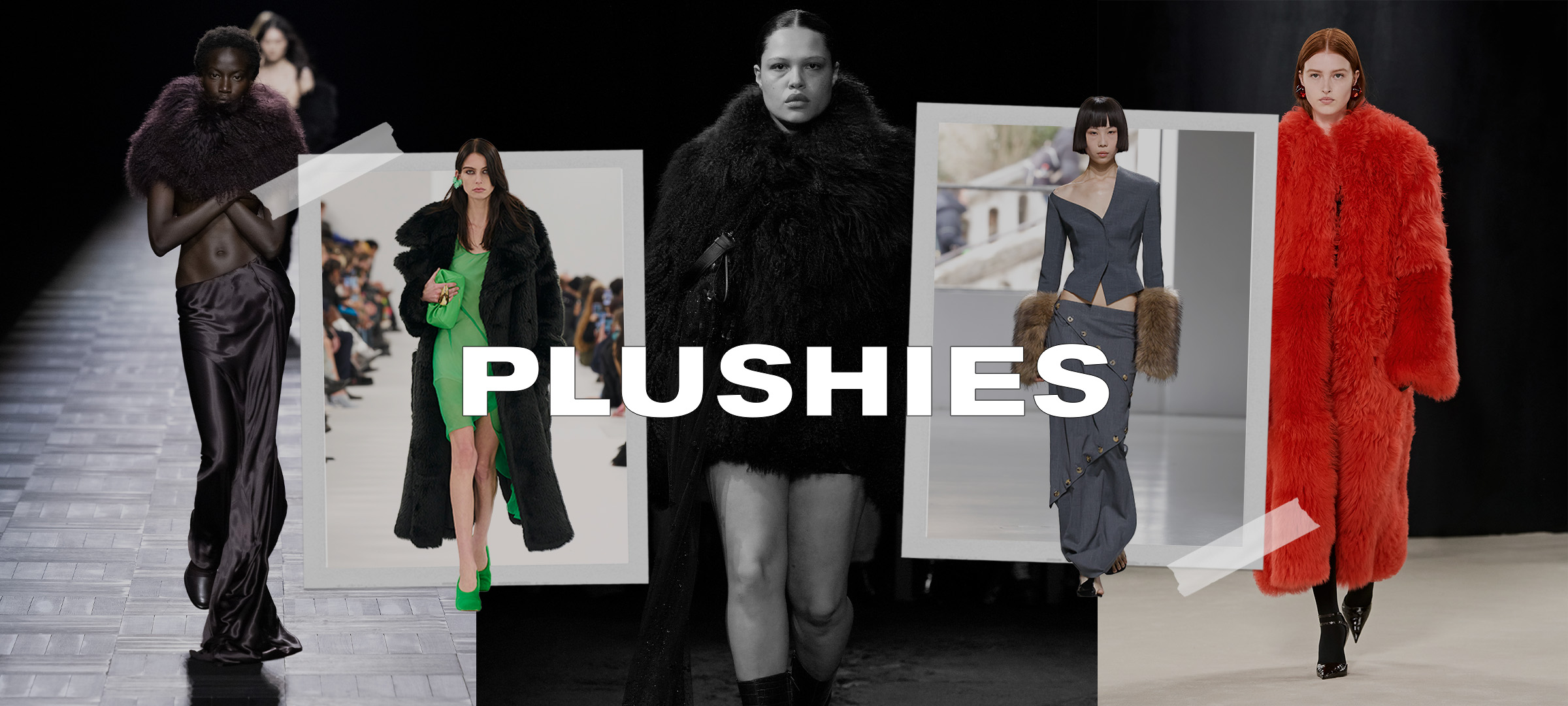
Akin to a child that finds consolation in its collection of plushies, designers always return to their form of comfort in the fall—ahem, faux fur materials. Some things we may outgrow (sorry, teddy bears), but with F/W 23 collections, we saw fur given a modern twist that made them feel more age-appropriate than ever. One example of this modernization is in Maximilian Davis's first fall collection for Ferragamo, which drew from the Italian fashion house's long history of working with Hollywood icons in the '50s, like Marylin Monore and Sophia Loren. He said, "I was interested in using their glamour and beauty, and their way of dressing, as a reference, but looking at how we could make it feel modern for today." The oversize dramatic fur is synonymous with that era, but Davis made the silhouette contemporary through various runaway looks, including one in which a shaggy fur maxi coat came in a vibrant saffron hue and was styled with ultra-shiny black patent accessories that felt futuristic.
However, it wasn't just Davis who drew from the past. Matthew M. Williams of Givenchy did so too. In the brand's show notes, Williams admits wanting to find a "balance between the old and the new: silhouettes, constructions, and styling informed by the past but adapted for the present." An aim that's most evident in a sleek black fur coat draped over a sheer kelly green dress and matching fuzzy pony-hair pumps. While houses like Givenchy, Ferragamo, and 16Arlington, may have used fur coats to draw from the past and revamp it for the future, this textile was not limited to outerwear this season. For example, Mode's collection with A.W.A.K.E. features an asymmetrical tailored blazer adorned with fur cuffs. While at Ann Demeulemeester, a chocolate brown shaggy shall, was styled as a top with a matching maxi silk column skirt. Plus, there were the furry accessories—from faux fur pumps at Stella McCartney to shearling clutch bags at Khaite—which showed the full range of this material. While our ideas around this textile may be rooted in how cozy and downright comforting they can be, designers reminded us that with a bit of creativity, they can feel contemporary too.

In almost direct opposition to the more plushy furs materials we saw across F/W 23 collections, there was an edgier play on texture that was just as prominent: hardcore hardware. Like fringe, metal grommets, studs, and eyelets are typically classified as embellishments. However, how they were utilized in collections this season created a unique take on texture. For many designers, it seemed that the decision to use hardware was a way to challenge our perspective; or at least that was made clear through Bruno Sialelli's collection for Lanvin. The show notes shared, "Creation is a gift to our 'thirsty eyes'—a fashion collection, like a film or a novel, is an expression of pure imagination made a reality, the observer a curator through their eye." That aim to challenge the viewer is on full display in a Lanvin runway look in which a tailored denim suit skirt suit was covered in studs to create the illusion of polka dots. But this French house's collection wasn't the only one that probed an onlooker to be inquisitive (or at least zoom into the runway image again). In Copenhagen, we saw Saks Potts send a tailored leather moto jacket adorned with silver grommets of various sizes. In contrast, at Remain, a leather coat's lapels were embellished with oversized grommets.
But possibly the manifestation of how these ornaments were used to challenge our outlook was at Off-White. Last fall's show was the final collection to be created by the late and great Virgil Abloh, so this season marked the beginning of something new. For fashion houses, envisioning what the future looks like when you have such a prolific founder can be a fickle business—yet, under the creative direction of Ibrahim Kamara, this collection does just that. The runway show, of course, drew inspiration from some of the more industrial elements that Abloh was known for, but with a futuristic, almost sci-fi bend. Typically ultra-feminine silhouettes like mini skirts, high-collar pleated dresses, and fitted peacoats came in an ink-black hue and adorned grommets all over—making them the type of item you'd expect to see on any alt-girl trapezing through a dystopian landscape in. But make no mistake, the show's tone wasn't an homage to the end of an era but a shift to see the future. Kamara was trying to use the materials to "conjure a new vision of indigenous civilizations." In that aim, he reminded us that the best clothing chips away at our seemingly "hard" and "immovable" perspectives about the world, other cultures, and the future simply through extra hardware.
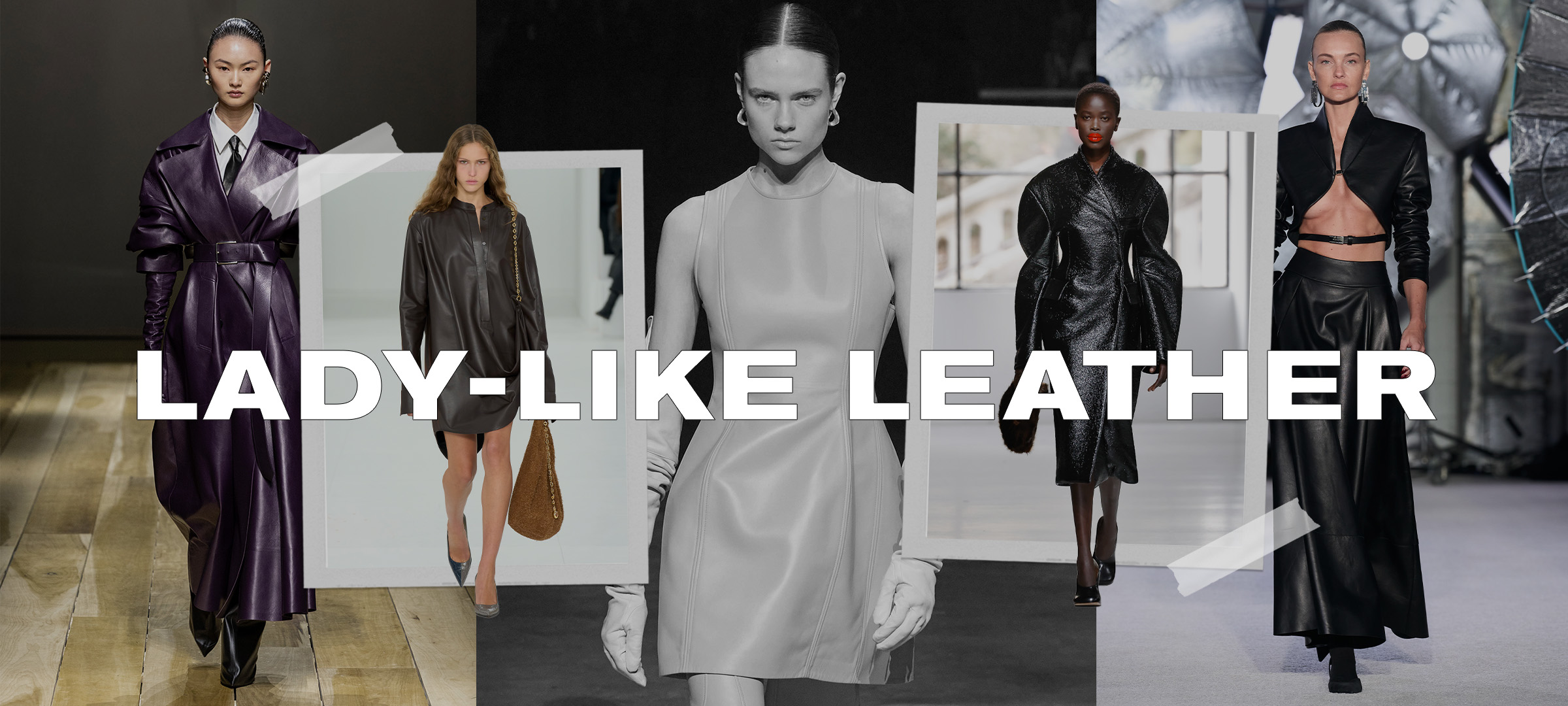
Leather is another textile that always manages to come back around, so it's no surprise that it played such a significant part in collections this season. But before you chalk this up as a conventional take on this evergreen textile, you'll want to examine the details closely. If you can recall, it was only last fall that we saw heavy-duty leather bubble up in the Miu Miu and Diesel collections. Since then, we've shifted away from emphasizing more "masculine" silhouettes and treatments to a full-out embrace of something we can only dub as "everything lady-like." For designers this season, it was less about the leather being the focal point but how other elements (e.g., tailoring, hardware, and color) can transform the material. Or at least that was the driving principle for Jonathan Anderson of Loewe, for which the collection was "an introverted stance that's about silhouette, texture, the way materials react to light." The play on proportions is most adeptly embodied in a chocolate brown leather shirt dress draped dramatically upwards by a single dainty gold chain. Anderson may have dedicated his collection to the "elementality" ideal, but he's not the only one who nailed the ethos.
Butter yellow leather rolled down the curves of the waist like oil glides on a pan at Jil Sander—resulting in an ultra-flattering nipped-in mini dress. Similarly, at A.W.A.K.E. Mode, a coat felt as if it could have been pulled out of a gemstone mine because of its shiny crinkled leather and oversized cocoon sleeves. And when it didn't feel like designers' techniques rivaled elements in the natural world, we saw them turn to the human form as inspiration. For example, the ever-flattering classic trench coat was given a feminine twist in the form of purple leather at Alexander McQueen. While at Brandon Maxwell, the female form was on full display in impeccably tailored looks—including a sultry jet-black cropped blazer held together by a box buckle belt styled with a matching maxi skirt. The overall result was a series of collections that played with this material in a way that mother nature would have enjoyed (should she have had her hand in the design process).
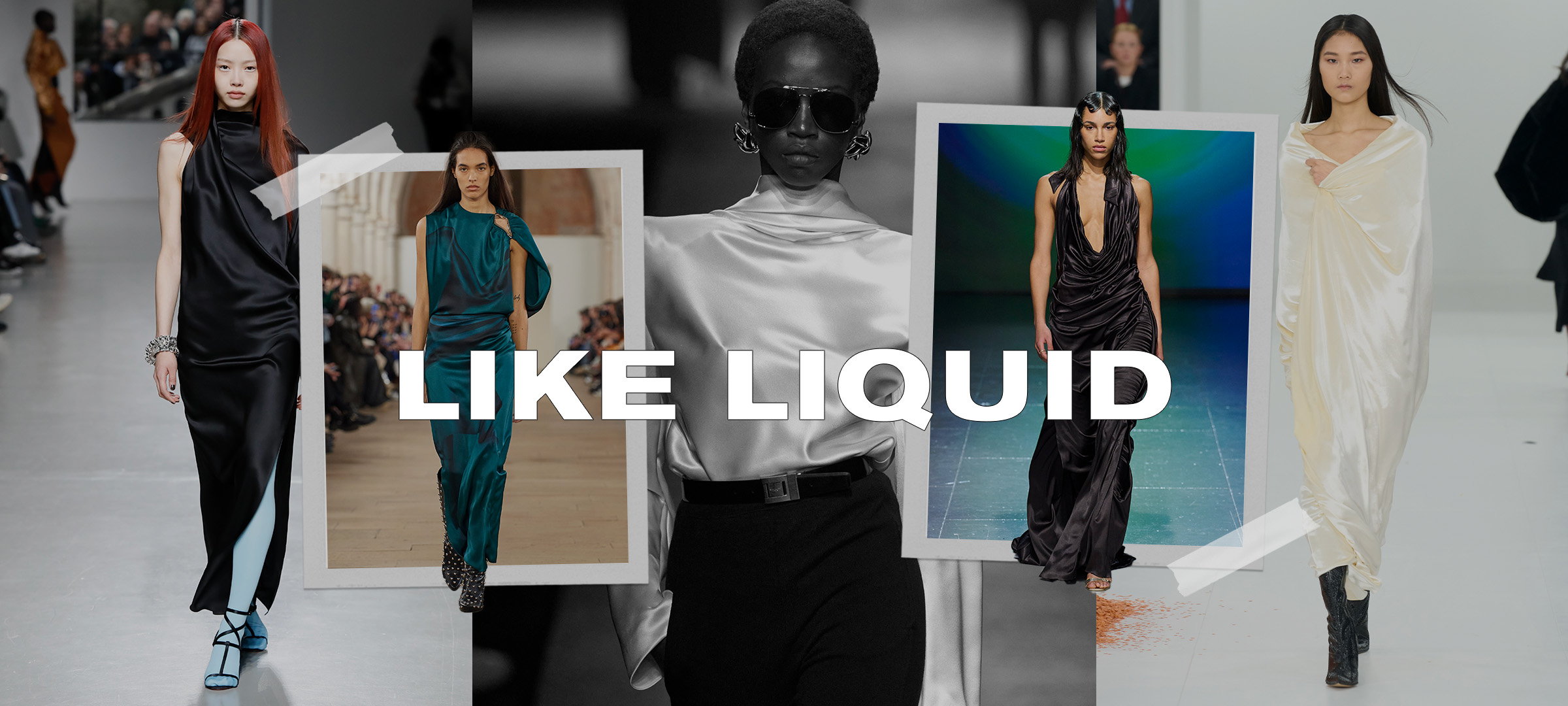
It wasn't just leather that felt like it had taken a cue from the natural world in F/W 23 collections. Satin also took over the runway like a tidal wave. While we typically see this material relegated to spring collections in the form of breezy silhouettes, we saw a change of current this season. What makes this a noteworthy trend wasn't just a wide usage of satin, silk, and crepe-de-chine, or even the fact that there was more of an emphasis on tailoring and styling this season—though they're both important points to mention. Rather, this material's prevalence is important because it was used as a subtle way to nod to the fluid nature of ideas surrounding feminity. A prime example of this was Saint Laurent's fall collection by Anthony Vaccarello, which stated in its show notes, "It all starts with this gesture; fabric dictates the rest." It's an idea best conceptualized through how Vaccarello subtly challenged the more "masculine" elements of tailoring by focusing on materials—e.g., sharp shoulder pads were softened crepe-de-chine draped around the neck to create an ultra-chic creme blouse. Following the fluidity of the fabric itself to push the boundaries of feminity wasn't just something that Vaccarello explored this season. In her fourth collection, Dimitra Petsa of Di Pesta told Vogue Runway that she wanted to pay homage to the story of Persephone, who was transformed from a Greek goddess to queen of the underworld after being kidnapped. For Pestsa, it was a way to explore how darkness plays a role in the healing process—which was adeptly reflected in how chocolate brown leather, eggplant-hued chiffon, and jet black satin were draped down the body to give the appearance of a soaked gown.
Mythologies around heroines seemed to capture the minds of many designers this season, as we saw Antonin Tron of Atlein also attributed his collection to the exploration of "the myth of women." It wasn't so much about paying tribute to women of the past, but rather the present woman who's wearing his work. Hence, why much of the collection centered on taking techniques like draping and making them more functional for everyday life—e.g., an asymmetrical black satin dress was made fall-forward by layering colorful tights underneath. Similarly, we saw studded knee-high boots layered underneath a green satin gown adorned with gold hardware at Lanvin. While at Loewe, a model clutched a longline beige satin shawl over her body. Each look was a way in which this material was made to feel more practical. Of course, that's not to say the looks lacked that awe factor. They still had an air of mysticism to them. But what was apparent was that the material itself—both the subject matter and textiles—were the undercurrent guiding every garment.
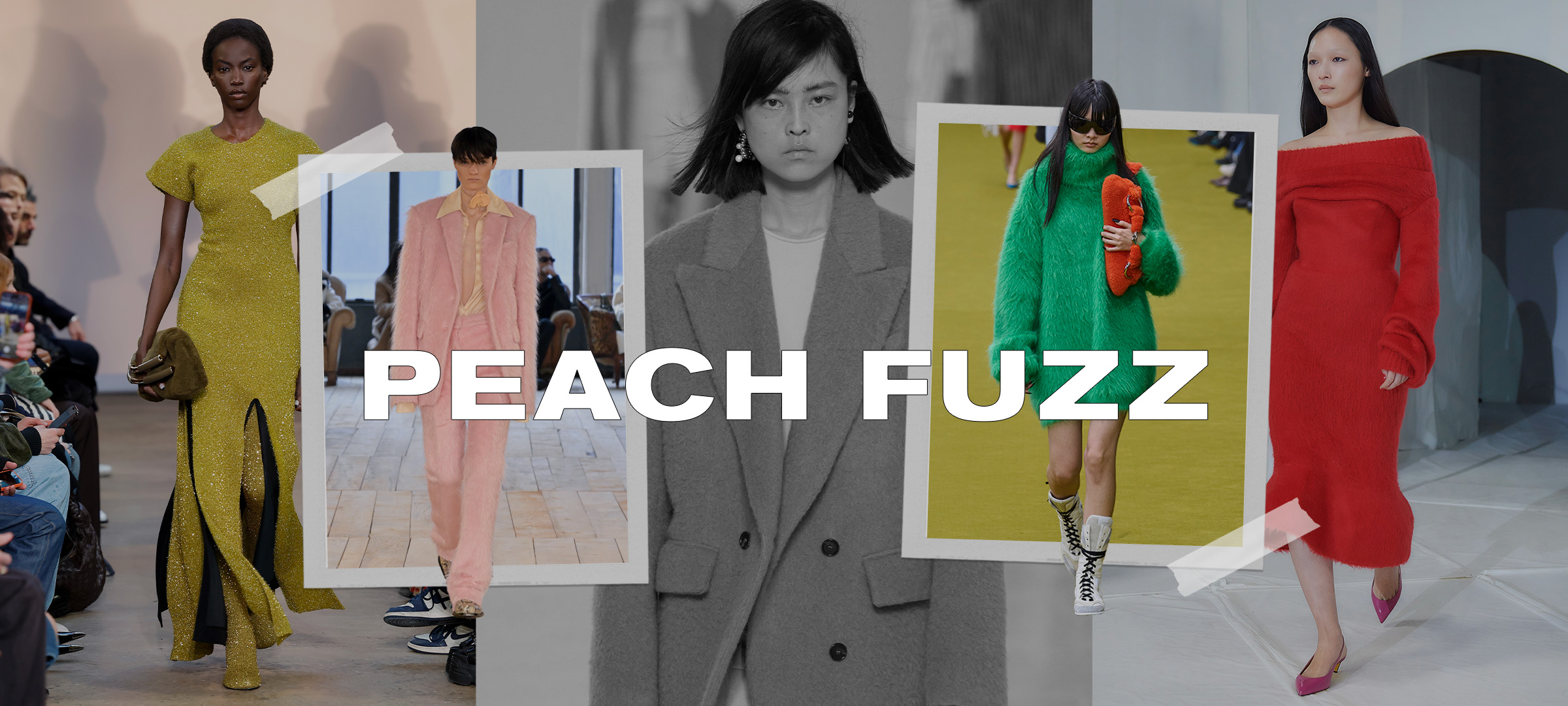
Were the term "cozy season" to be personified, its living embodiment could be found within F/W 23 collections in what we're dubbing "peach fuzz." Far more eclectic than the typical cold-weather textiles, we saw designers take fuzzy fabrications (made from mohair and wool) and use them in ways that altered perception. Typically when we think of this material, some may recall those oversized fuzzy sweaters gifted to us during childhood; but don't be fooled; the adaptation of this fabric was anything but adolescent. Proof lies in Proenza Schouler's collection by Jack McCollough and Lazaro Hernandez, which marked the brand's twentieth anniversary. Pulling references from the archives, we saw an homage to the evolution of the beloved brand—including a nod to their extensive fringe work in the form of a playful yellow knit maxi dress. Archives also inspired the atelier of Gucci, which, after Alessandro Michele left in late 2022, wanted to pay tribute to "the ecosystem of designers and artisans whose shared understanding of the House has passed down and evolved from creative to creative for over a century." That aim was reflected in a sea of textured pieces, including low-slung maxi satin skirts, shaggy fur coats resembling the cookie monster, and a fuzzy mohair turtleneck mini dress in kelly green.
While Gucci and Proenza Schouler's collections may have been about showing their brand's advancement through referencing archives, other designers were more interested in showing how traditional silhouettes could be transformed with this textile. For example, classic winter items like the oversized puffer coat, crew-neck sweater, and off-the-shoulder sweater dress were made from fuzzy mohair in vibrant primary colors in Marni's runway collection. As if that weren't enough of a selling point of how much this material has evolved, one needs to look to its adaptation to suiting this season—e.g., Sportmax took a boxy suit and fashioned it from a fuzzy baby pink mohair. While at MSGM, we saw Massimo Giorgetti hone in on the idea of "all fluffy everything," which was on full display in a look where an oversized dark orchid mohair blazer was styled over a tank dress with contrasting mauve furry heels. While embracing all things fuzzy may have been embedded into the ethos of MSGM's collection, it spoke to many designers this season. They say nothing is more universal than the appeal of a coming-of-age story, and for designers, peach fuzz was a way to further the plot.
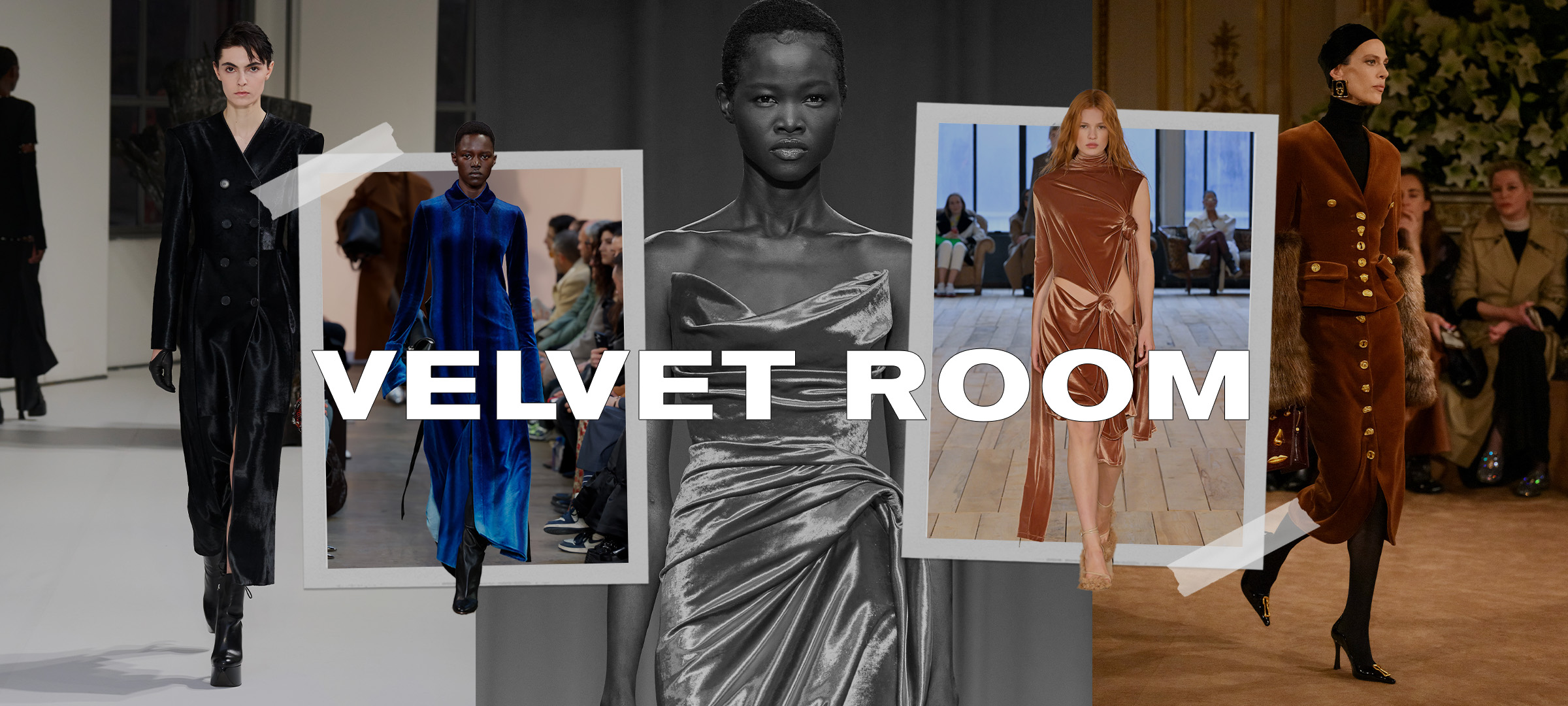
Lastly, we'd be remiss if we did not invite you into the room that seemingly occupied the minds of so many designers this season—ahem, the velvet room. While this material may conjure flashbacks to "cliché" holiday pieces, we urge you, don't let it. Velvet underwent its form of a renaissance this season, one that deserves its wing of a museum (or at least your undivided attention). To see how this material has transformed, one must start by turning to Del Core's collection. The designer's creative director, Daniel, admits to being inspired by how wildfires impact the environment. He said, "My mind was ablaze with the idea of mutation and the potential for new forms that emerge from the ashes." The idea of beauty arising from destruction is displayed through various looks in the collection, most notably in a double-breasted velvet coat in a black that feels as if it's been chared. But it wasn't just Del Core's collection that felt like it was aiming to bring something new to the forefront, as technique played an integral part in making this material feel fresh. We saw designers get creative unexpectedly—e.g., a longline blue velvet coat was dyed in ice cubes to create an ombré effect at Proenza Schouler. Or at Sportmax, we saw velvet slashed and tied together again to create a dramatically draped dress without cutouts. And then, there was Jason Wu's collection, which took traditional tailoring and added a feminine touch—which was most adequately represented in a yellow-velvet gown where the material was draped over a corset bodice.
However, the greatest example of bringing something new to life was found at Schiaparelli this season. For context, this French house has operated since its inception as a courtier, despite outcries by devotees for an expansion. But finally, under Daniel Roseberry's direction, we saw the brand release its first-ever ready-to-wear collection this fall—spoiler, it was worth the wait. As an almost antithesis to the whole "stealth wealth" movement, this collection dialed up the luxury in only a way that Roseberry could pull off. The runway was punctuated with sharp tailoring, supple leather, oversized furs, and, most importantly, multiple fire-colored velvet looks, including a skirt suit adorned with fur cuffs and nipple-shaped buttons. Roseberry's innate ability to honor the house's legacy while ushering in a new era will undoubtedly be written into fashion's history books. His work and so many other designers this season remind us that a label can't define true luxury. Instead, it's the ability to take something as "minute" as materials (like velvet, leather, and so on) and manage to make something magical from them.
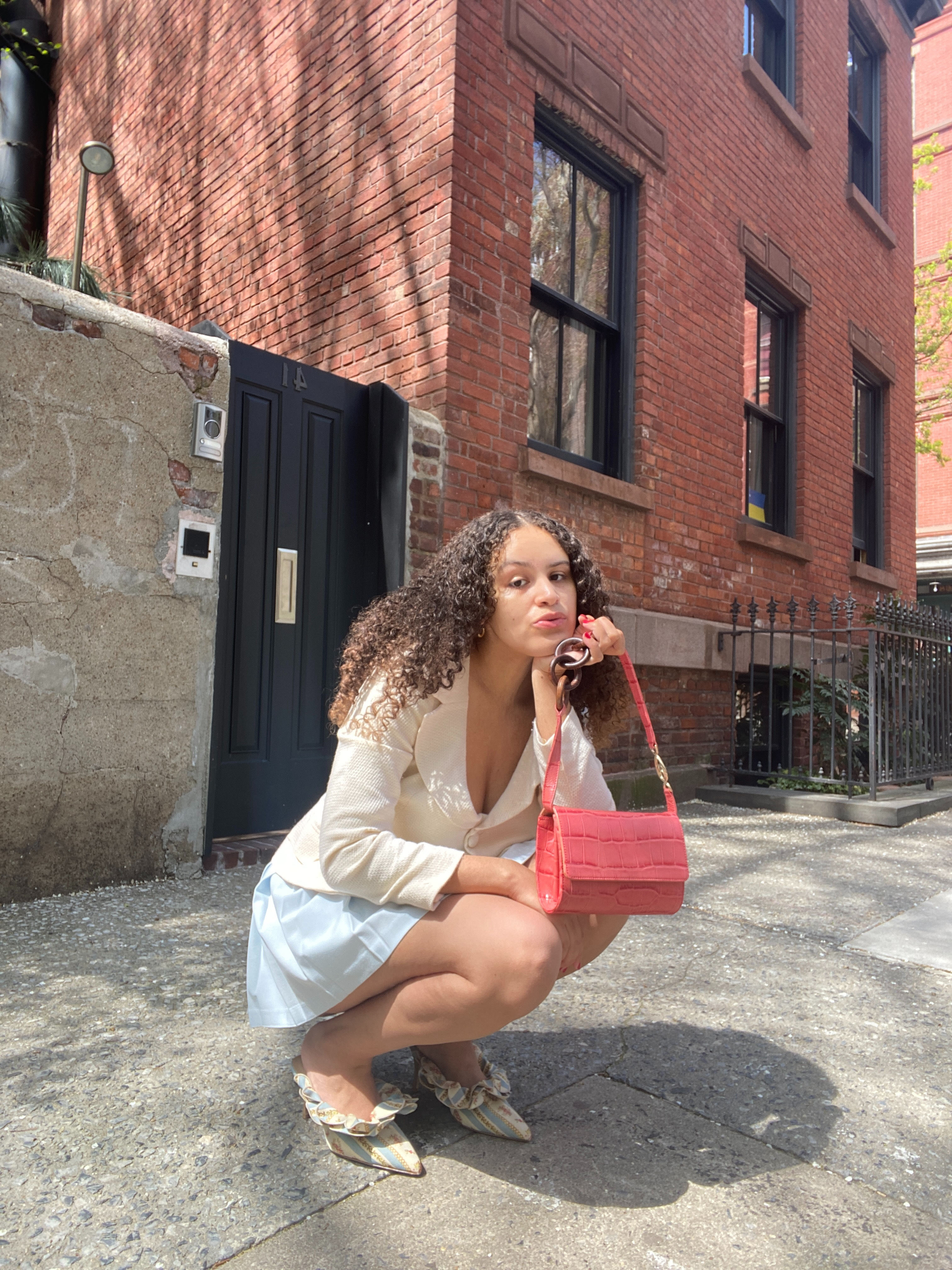
Jasmine Fox-Suliaman is a freelance writer and editor living in New York City. What began as a pastime (blogging on Tumblr) transformed into a lifelong passion for unveiling the connection between fashion and culture on the internet and in real life. Over the last decade, she's melded her extensive edit and social background to various on-staff positions at Who What Wear, MyDomaine, and Byrdie. More recently, she’s become a freelance contributor to other publications including Vogue, Editorialist, and The Cut. Off the clock, you can find her clutching her cell phone as she's constantly scrolling through TikTok and The RealReal, in search of the next cool thing.
